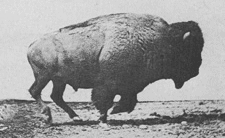
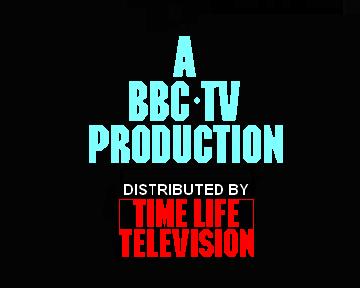
Click here to learn the story.
 |
 Click here to learn the story. |
|
Below is a screen capture from a Kino-on-Video DVD. Please take a close, careful, leisurely look at it:
|
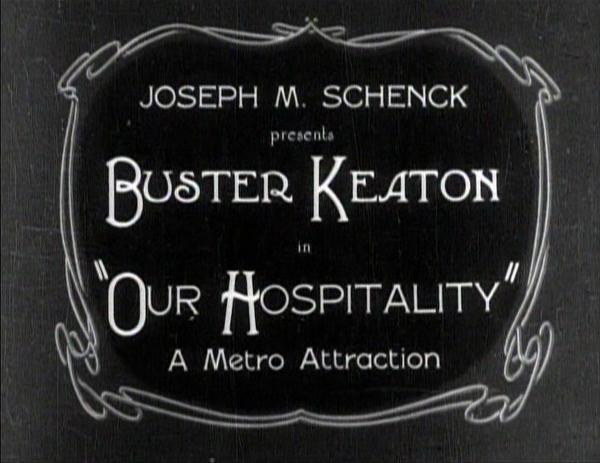
|
What you see above is pretty much what you would have seen on a cinema screen in 1923 when this silent movie was new.
Oh, there are a few differences.
The scratches wouldn’t have been there originally, and the density would have been more even.
The centering may perhaps have been a little better.
You see, as films get handled, they get scratched. As they get old, they lose density.
And all films shrink, so all films from the 1920’s have now shrunken considerably.
Once a film has shrunken, it may not be possible to align it on printers and projectors properly,
and it may well drift off a little bit to one side or the other.
Also, if a film has shrunken too much, it may be necessary to modify the printer
to drive the film from the sprocket holes on one side only, thereby forcing it to shift a little to the right or, more often, to the left.
That might be what accounts for the image above being slightly off-center.
Originally, this film would have been shown on screen at something close to a width-to-height ratio of 4 × 3, or 1.33:1,
through a projector aperture measuring .90625" × .6796" or thereabouts.
If you measure the above frame, you will see that it is now closer to 1.30:1.
Perhaps that’s because of the alignment problem caused by shrinkage, which prevented one edge from being scanned for video.
And perhaps that might also be because the technicians at the video laboratory
discovered that there was a little more usable height on the frame than would have been shown at cinemas in 1923,
and decided to use it for the video transfer. Maybe. I can’t know for sure.
More prosaically, this could simply be the result of my
As far as I know, this film was not revived until the 1950’s, and if you had gone to see it then,
it would not have looked the same.
No. It would have looked like this:
|
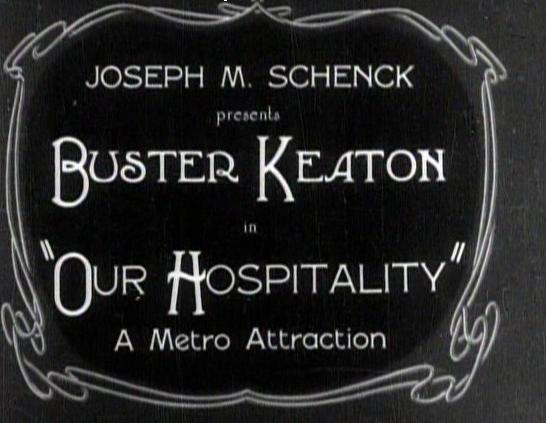
|
Can you see the differences?
First of all, the left side is missing, throwing the image severely off-center.
The reason for this is that by the 1950’s, projectors were showing only sound movies,
and since the sound track was where the left side of silent movies used to be,
well, when silent movies were revived, the projectors were no longer set up to show the left side.
Now, you will notice that the top and bottom are missing as well.
This is because when the left side is missing, the resulting image is nearly square.
After showing audiences nearly square movies for a few years in the late 1920’s and early 1930’s,
studios and cinemas decided, only for reasons of æsthetics,
to return to something like the width-to-height proportions of silent films.
And to do that, the top and bottom were masked off in the projector.
The aperture plate for this format is usually about .825" × .600", for a width-to-height aspect ratio of 1.375:1.
(Trial versions of this format, which you can still find in a few older cinemas, could be as narrow as .796" and as tall as .610".)
When this new standard was formalized in March 1932 it came to be known as the “Academy Aperture,”
for though it was standardized by the Society of Motion Picture Engineers, the usual body for such things,
the SMPE did so at the insistence of the Academy of Motion Picture Arts and Sciences,
an institution that really has nothing at all to do with technical standards.
Though the resulting image was smaller, a new set of lenses, of a slightly shorter focal length
(and
Now, if you go to a modern commercial cinema today to watch this movie, it will look different yet again.
Take a look:
|
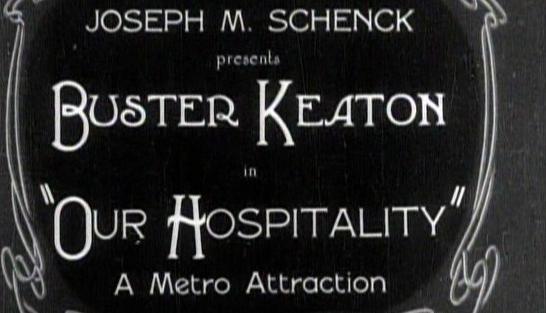
|
The reason for this is that modern cinemas are set up only to run widescreen.
Despite all you’ve heard and read, widescreen is seldom an improvement.
More often than not, it simply means that a smaller portion of the film image is being overly magnified to fill a larger screen.
This particular crop that I am illustrating for you is one of the most common, 1.85:1,
which utilizes an aperture plate in the projector measuring about .825" × .446".
So, are you ready? Let’s do a comparison of several sequences,
to illustrate what the movie would have looked like when it was shown originally,
what it would have looked like when it was revived 30 or so years later,
and what it looks like when it’s shown at movie theatres now.
|
| As it looked originally | As it would have been shown 30 years later |
As it would be shown in modern cinemas |
 |
 |
 |
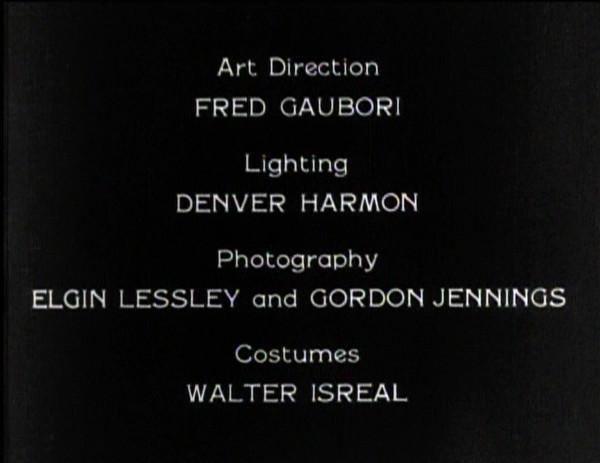 |
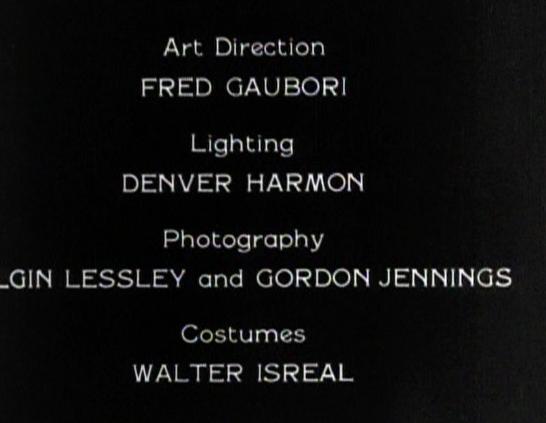 |
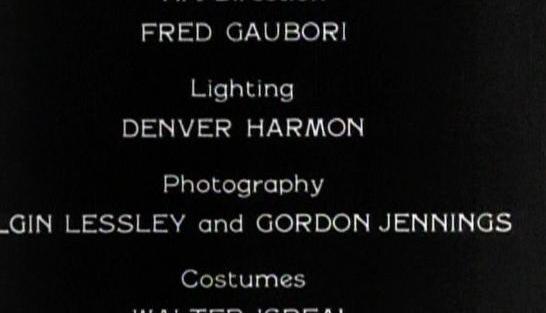 |
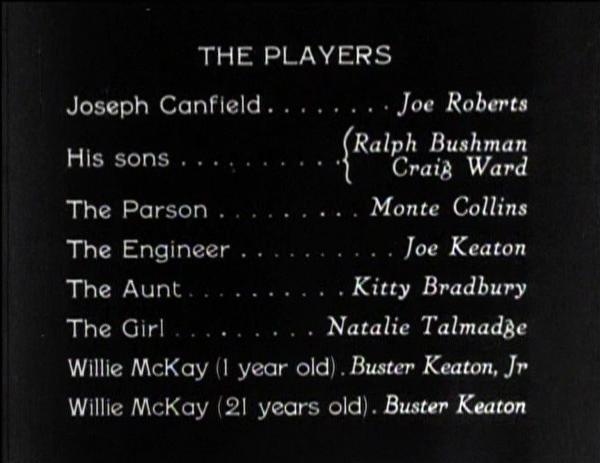 |
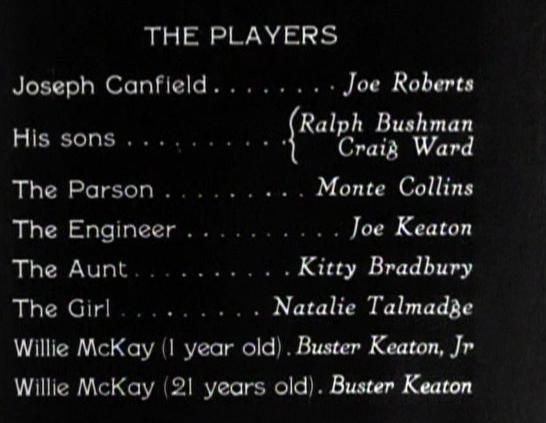 |
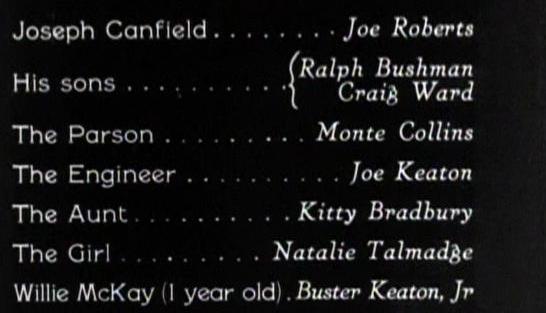 |
 |
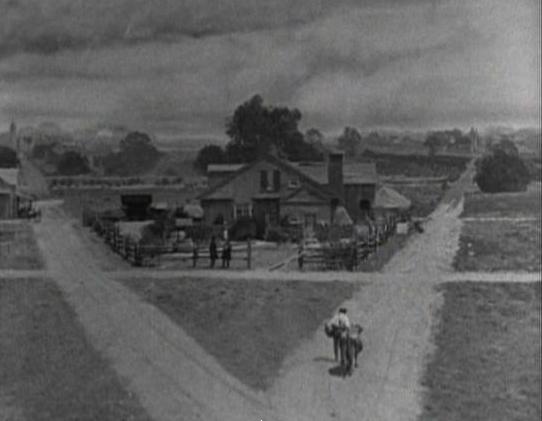 |
 |
| Isn’t it amazing that the background and the sky and clouds look so much like a painting? That’s because they are a painting. I think. This looks to me like a “glass shot”: a painting on portions of a piece of glass positioned in front of the camera so that the real-life scene is framed through the transparent part of the glass, and the background is in the painting around it. The effect can be most convincing. | ||
 |
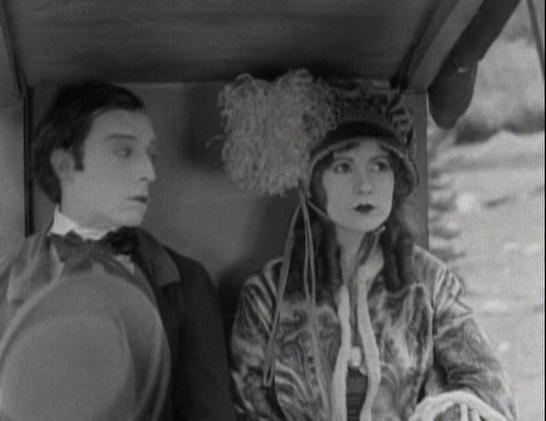 |
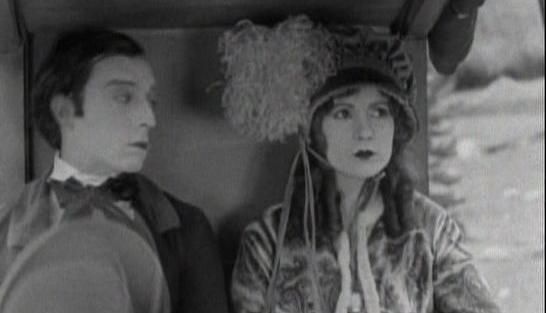 |
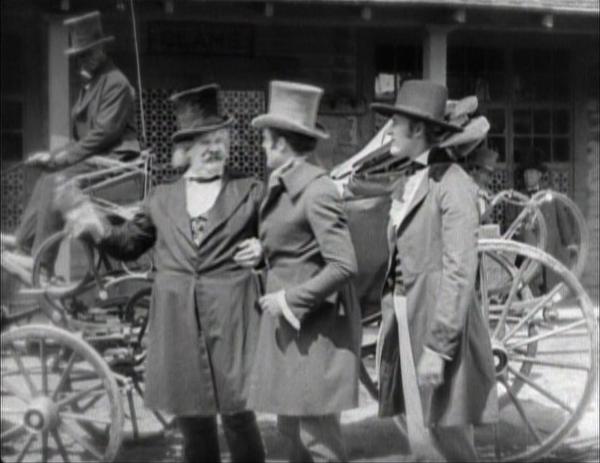 |
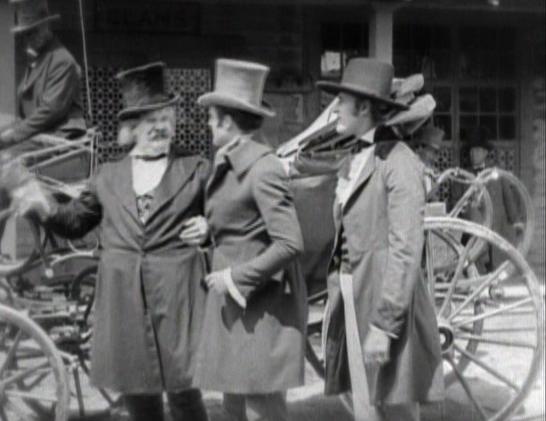 |
 |
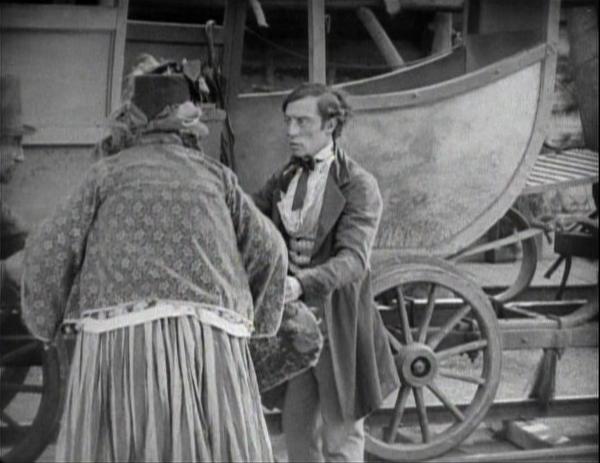 |
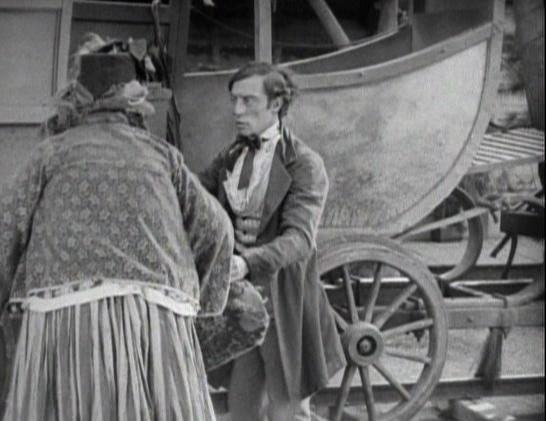 |
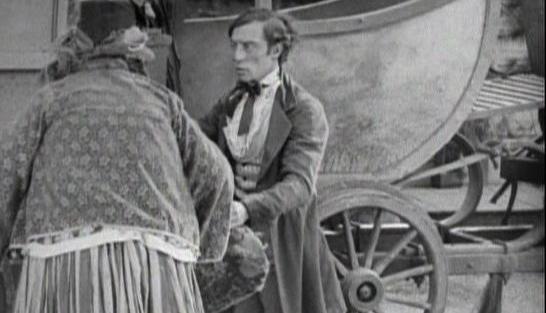 |
 |
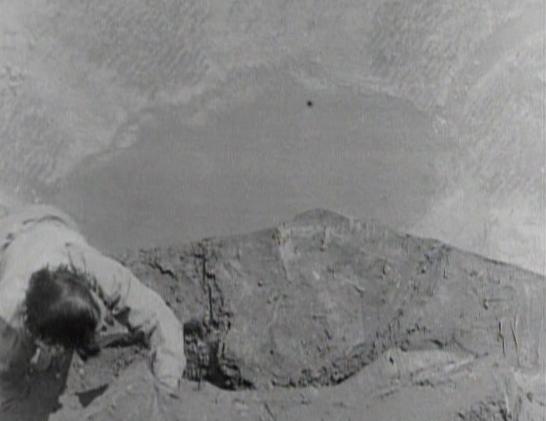 |
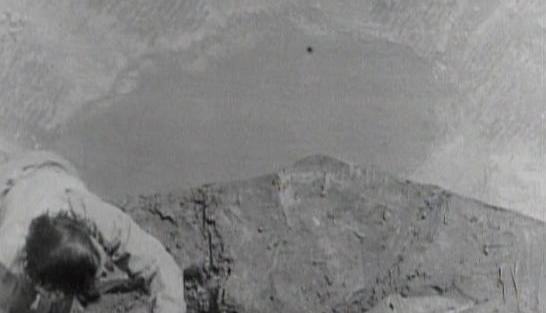 |
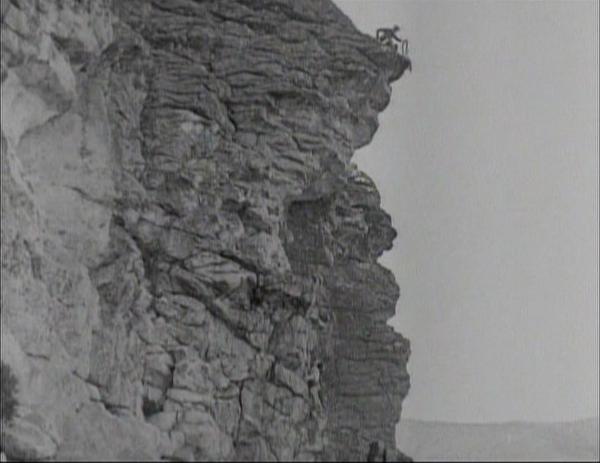 |
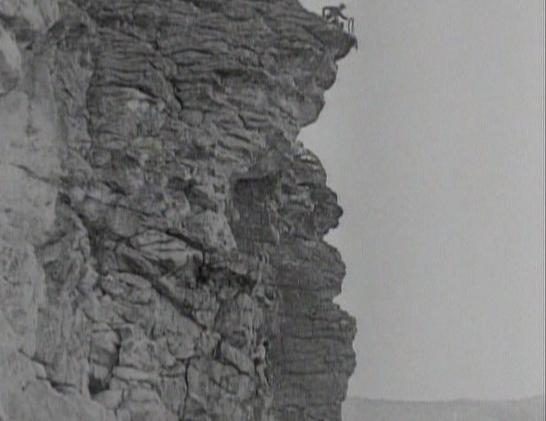 |
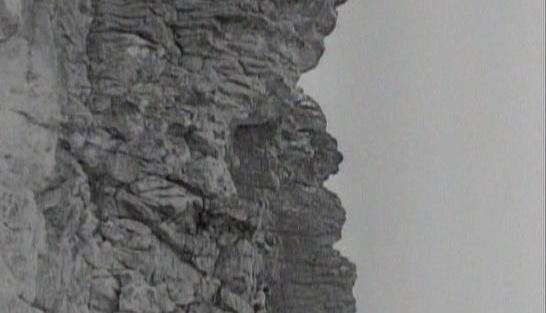 |
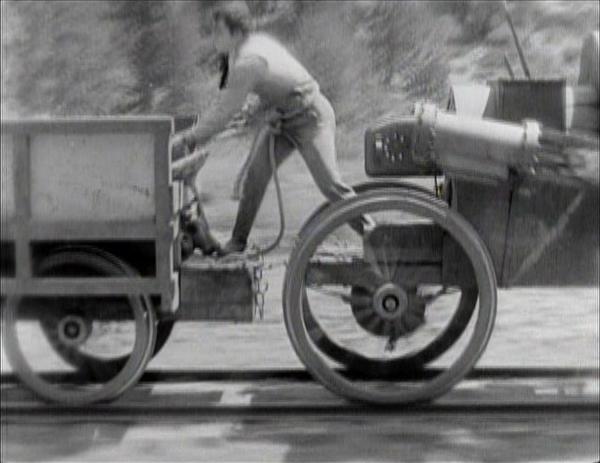 |
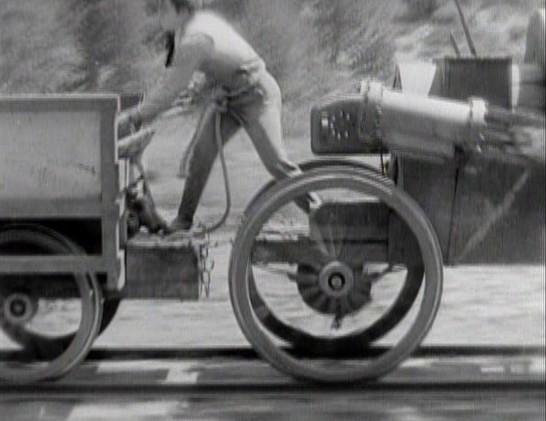 |
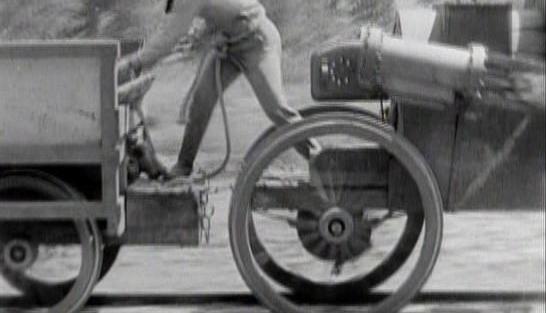 |
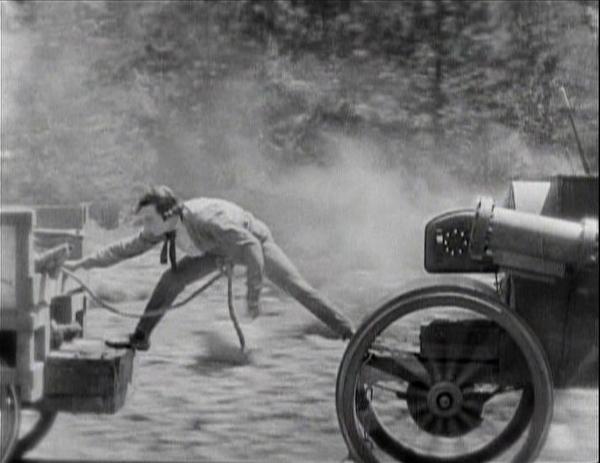 |
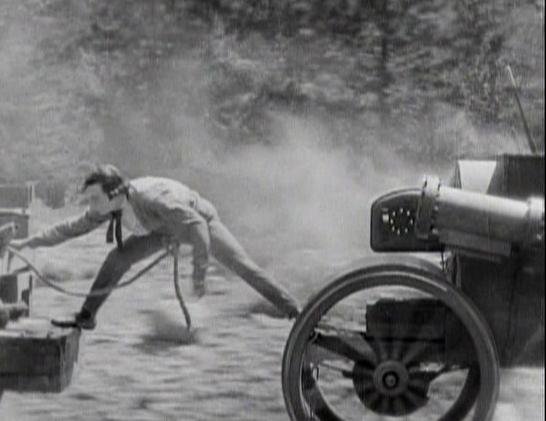 |
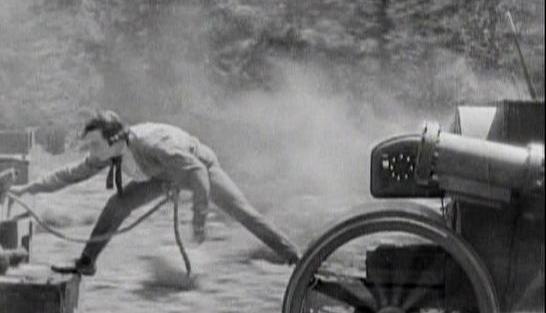 |
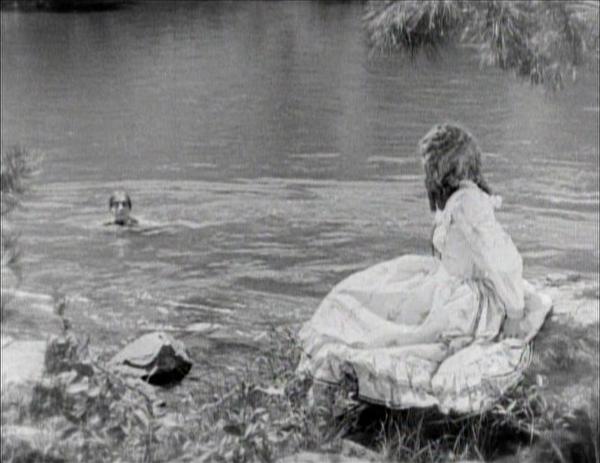 |
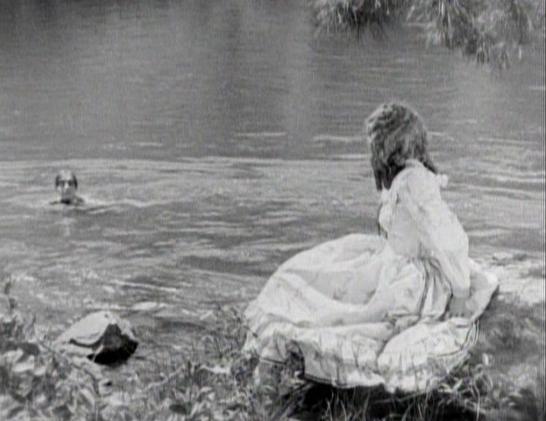 |
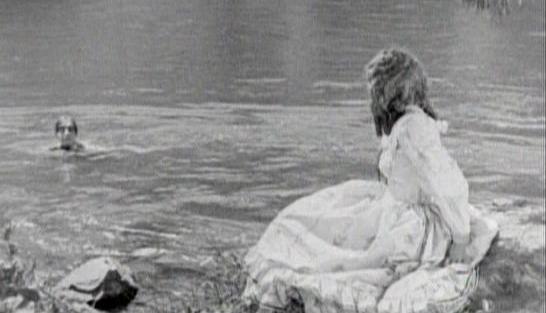 |
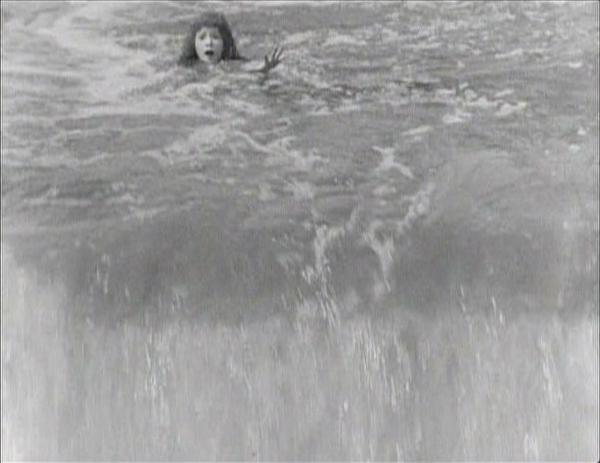 |
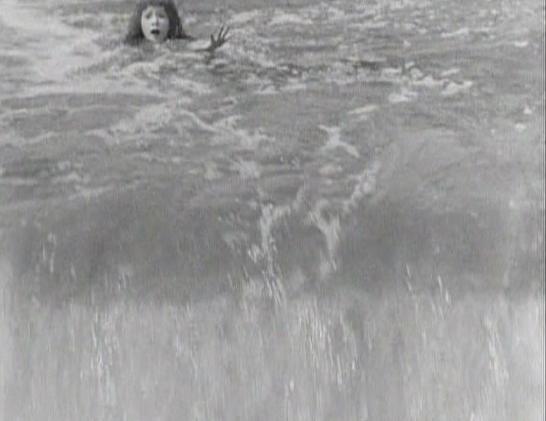 |
 |
|
Most people who go to the movies, and even most people who go to older movies, are unaware that anything is wrong.
They see an image fill the screen, and they assume it must be right.
It is not right — not at all.
When the cropping is truly egregious — for instance, when it is impossible to see people’s heads in most of the scenes —
then audiences will notice that something is wrong, but won’t quite be able to finger the culprit,
and will attempt to put this trouble out of their mind and return their attention to the story.
Most cinemas are set up for two picture formats only, regularly and wrongly known as “FLAT” and “SCOPE.”
“SCOPE” is an abbreviation for “Cinemascope” and has come to be a slang term meaning “anamorphic,”
which refers to any widescreen process by which the image is squeezed on the film and stretched out again on screen.
“FLAT” is an almost meaningless term that basically refers to anything that’s not “SCOPE.”
At most cinemas the on-screen difference between the two is almost indiscernible.
By the way, fewer and fewer cinemas seem to be able to show even 1.85:1, which is supposedly the new world standard.
I have visited projection booths and measured aperture plates, astounded that some measure as small as about .750" × 350".
As for “SCOPE” films, well, at many (most?) cinemas, so much of all four edges is cropped off that the scope is all gone.
Projectionists receive a film, possibly check for damage, and then assemble it, put it on the projectors, and press the GO button.
Most will not notice that anything is wrong.
Oh yes, a few projectionists here and there will notice that something seems missing, and will turn the framing knob downwards to get an actor’s face on screen,
and then be confused when in the next shot a woman drops her purse which disappears off the bottom of the screen.
Turn the framing knob upwards to get the purse back on screen, and then the next shot crops off another actor’s head.
After turning the framing knob up and down a few times to follow the action, the projectionist will have to attend to a hundred other things,
and will leave the rest of the movie alone, assuming simply that it was poorly made and not worth anyone’s bother.
Of course, in the above narrative, we’re assuming that there’s a projectionist in the booth, which is seldom the case anymore.
Nowadays, in the usual semi-automated cinema, a popcorn kid or usher runs up, presses the GO button,
and runs back down to make more popcorn or tear more tickets.
No one attends to the machines for the duration of the program.
Well, maybe I’m being a little mean.
There are, I would guess, maybe 40 or 50 cinemas in the US, and maybe about another hundred spread through the rest of the world,
that have all the formats and use them properly, that have caring managements, and that have captive projectionists who love movies and who know
what they’re doing. And, actually, when you think about it, that’s a lot.
Now, suppose you want to spend a relaxing evening at the cinema enjoying the light-hearted old German movie M.
As a few people are beginning to recognize, M is not widescreen, nor is it Academy.
It used the taller MovieTone (a/k/a Photophone) aperture, which is nearly square, somewhere between about 1.18:1 and 1.22:1,
depending on how the aperture plate is filed — anywhere from about .800" to about .825" wide, by about .6796" tall.
(I’m simplifying a bit here. In the 1920’s and early 1930’s, during the transition to
|
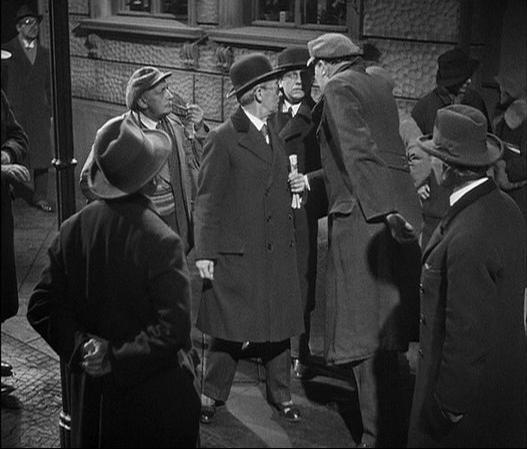
|
And that’s exactly the way it needs to be shown, without any cropping at all.
But how many cinemas can perform that feat anymore?
So most cinemas will run it at widescreen.
If the cinema you are attending can actually run the recently recognized new world standard, 1.85:1
(chances are that the cinema you are attending will show far less of the image than 1.85:1), the movie would look like this:
|

|
Not too bad, you think? Well, remember, this is a German movie, and so it will have subtitles, hence:
|
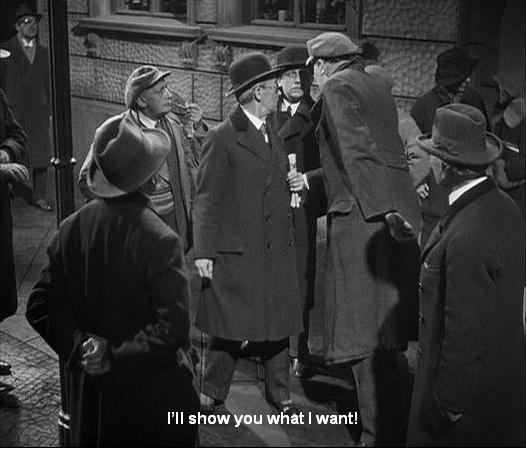
|
So when shown at widescreen, the people in the auditorium who are not fluent in German will have a rather hard time of it, won’t they? Compare:
|
 |
 |
|
Of course, what’s to prevent the projectionist for turning the framing knob downwards to make the action a little more comfortable?
Like this:
|
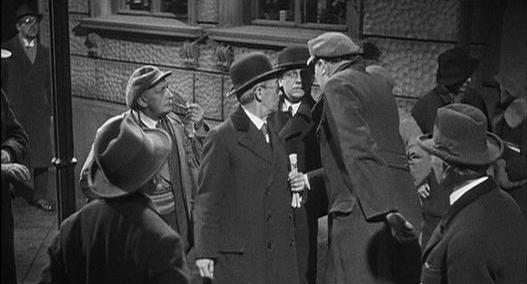
|
Actually, there’s a fair chance that the projectionist will turn the framing knob upwards so that you can read the subtitles:
|
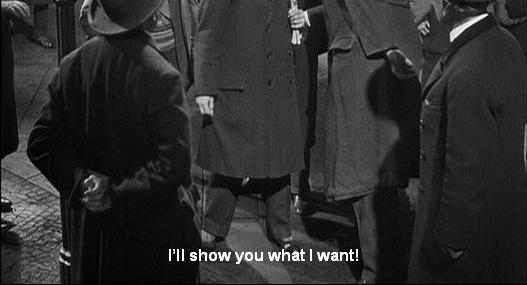
|
And nobody complains.
Now here’s something I’ve been wanting to do for nearly four decades.
As you know, Charlie Chaplin made a beautiful movie called The Gold Rush,
which he released in 1925.
Some 17 years later, in 1942, he
|
| 1925 Version Screen captures from the WB “Charlie Chaplin Collection” (PAL system) |
1942 Version Screen captures from the WB “Charlie Chaplin Collection” (PAL system) |
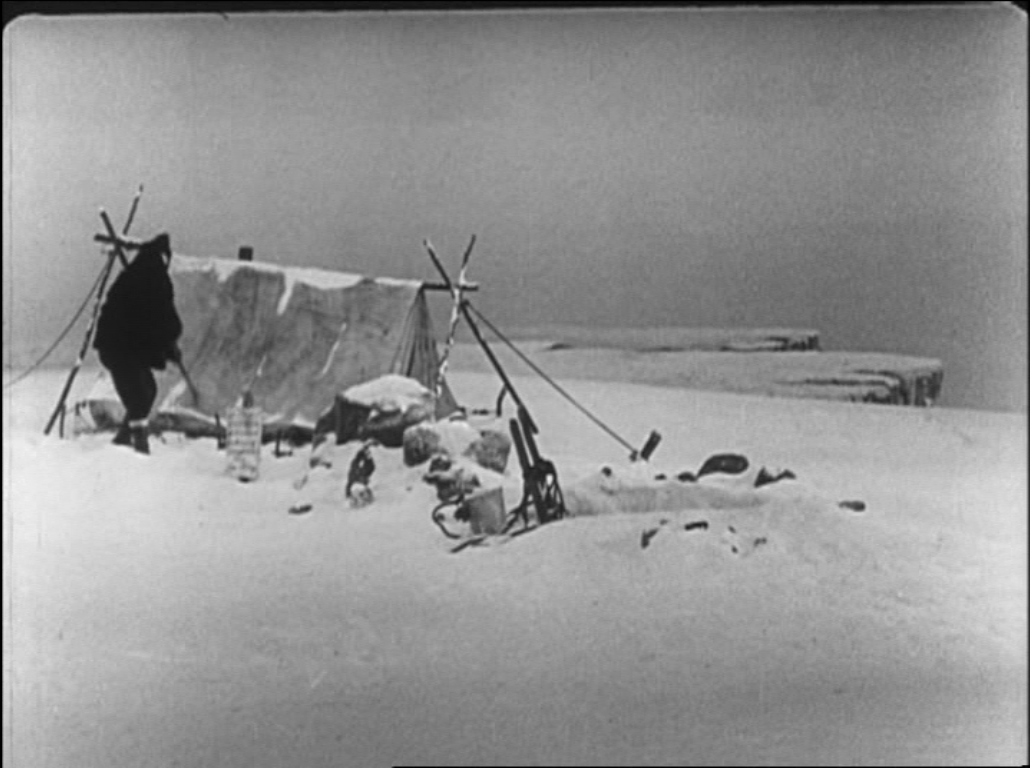 |
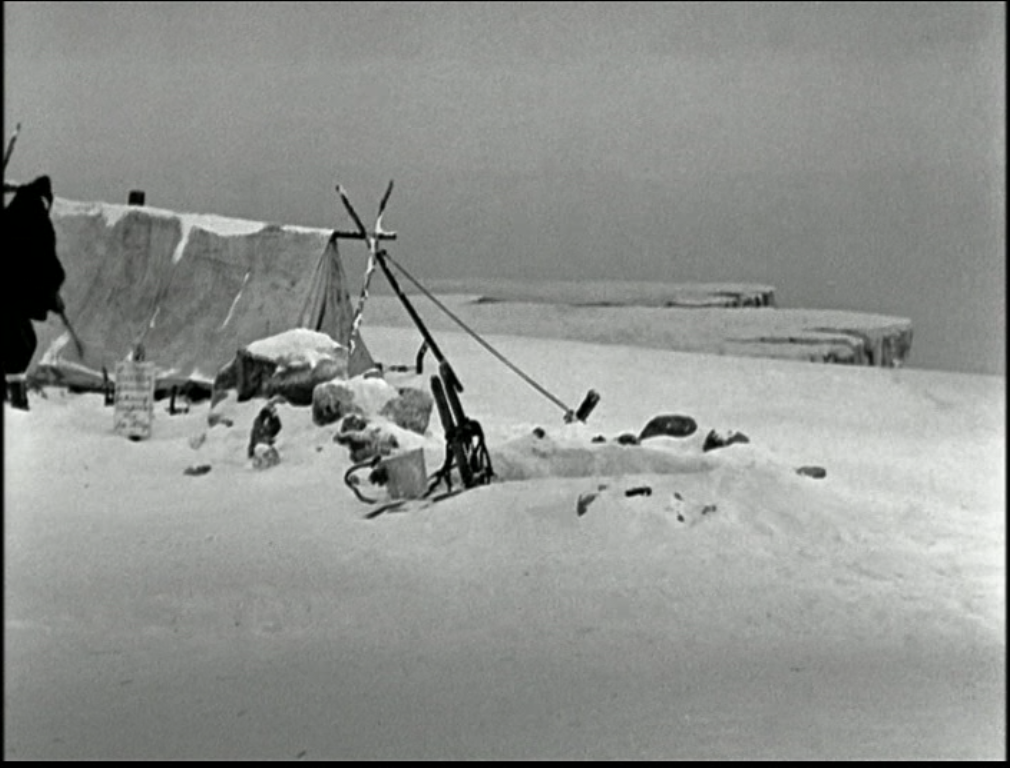 |
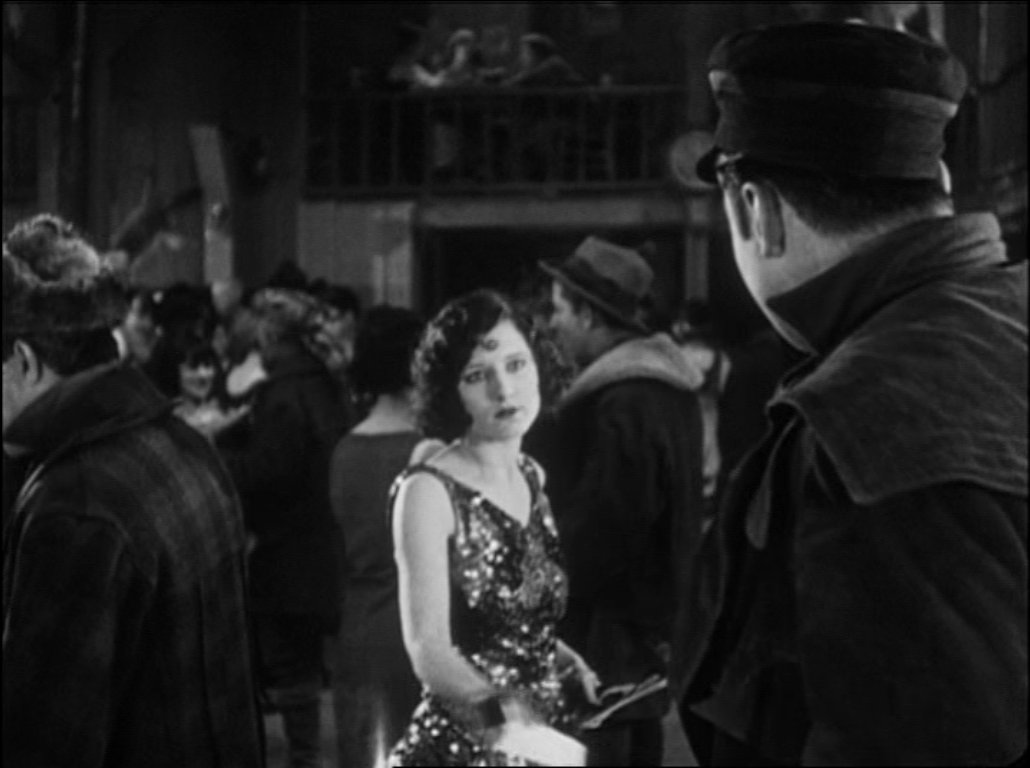 |
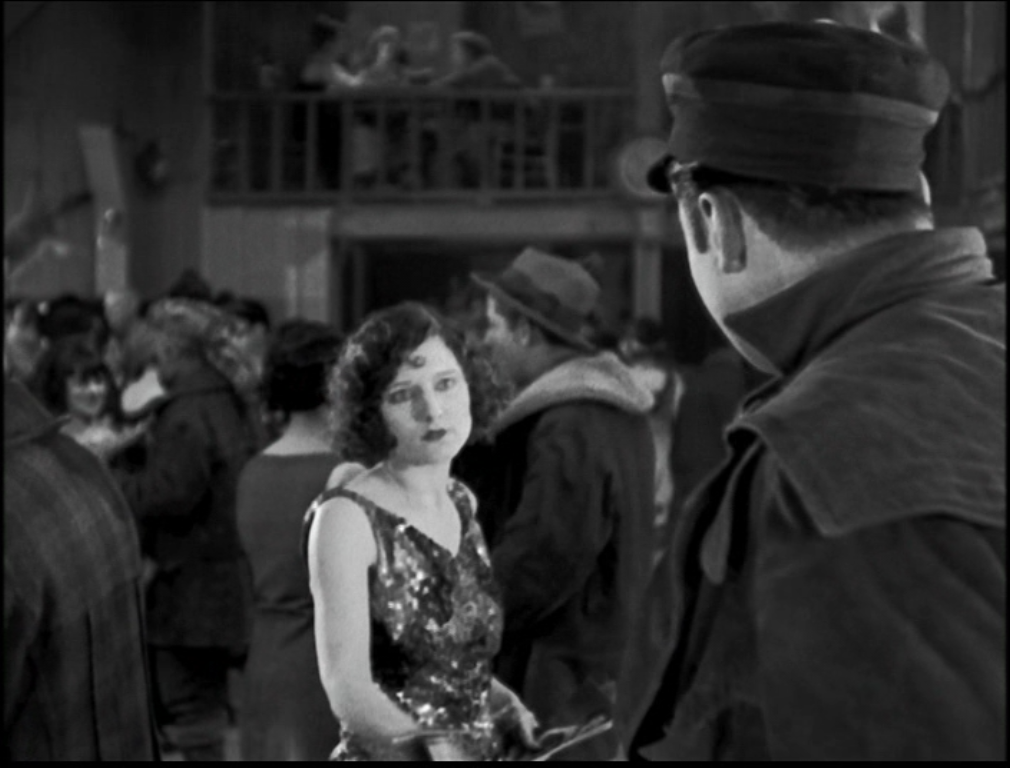 |
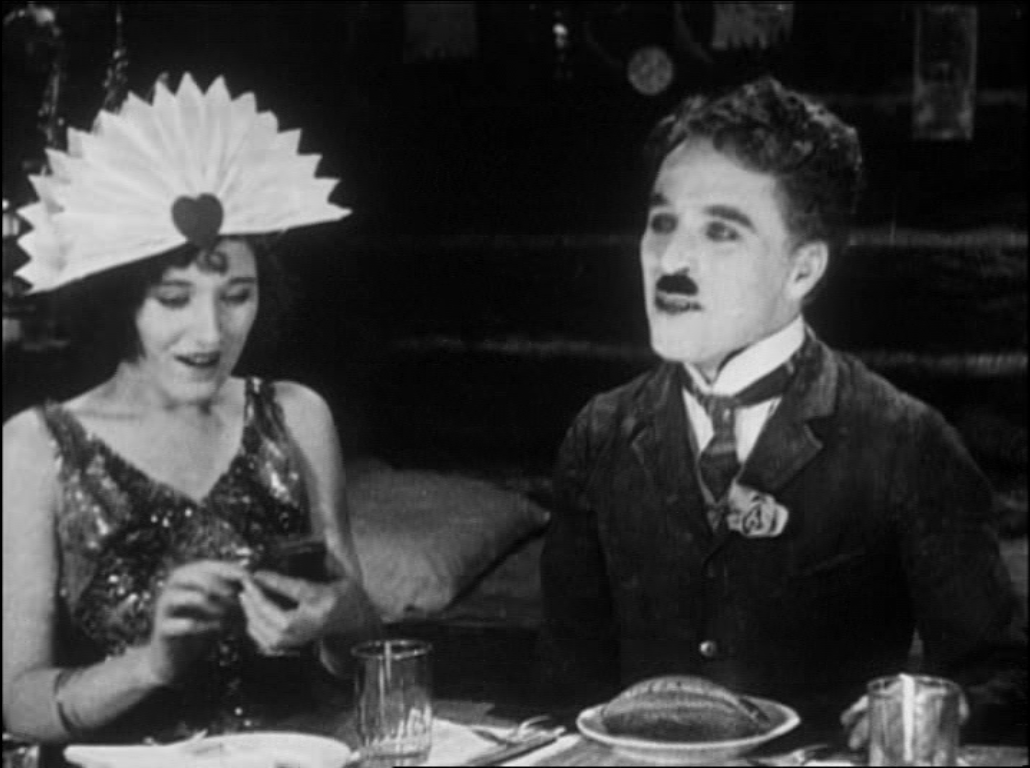 |
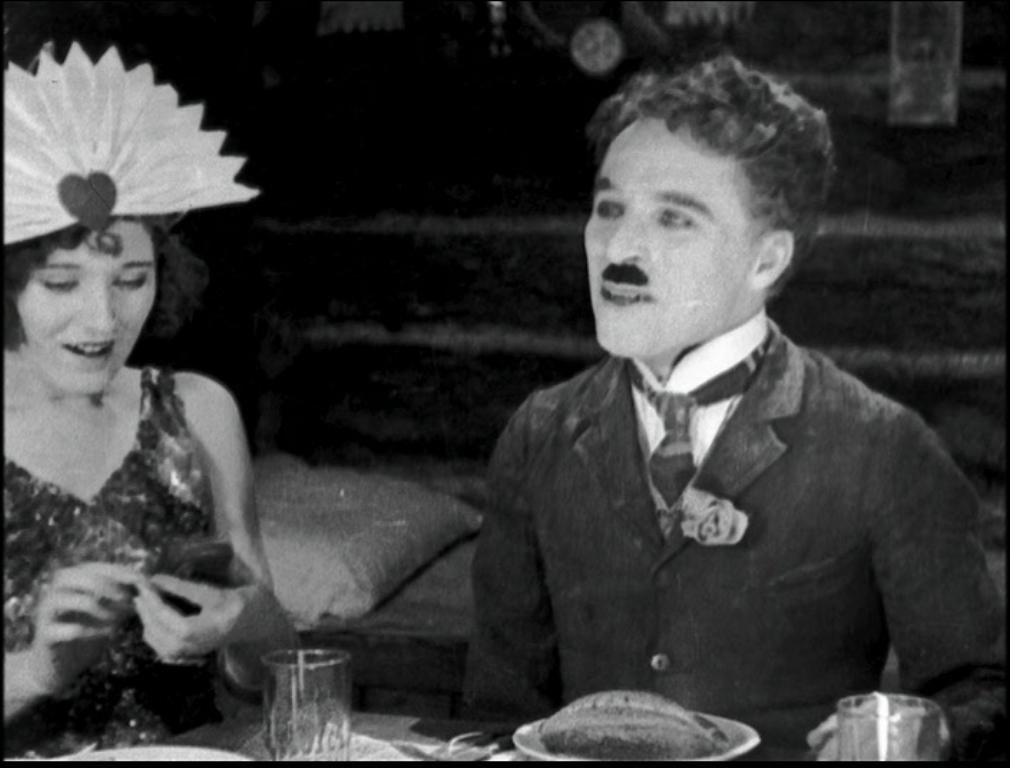 |
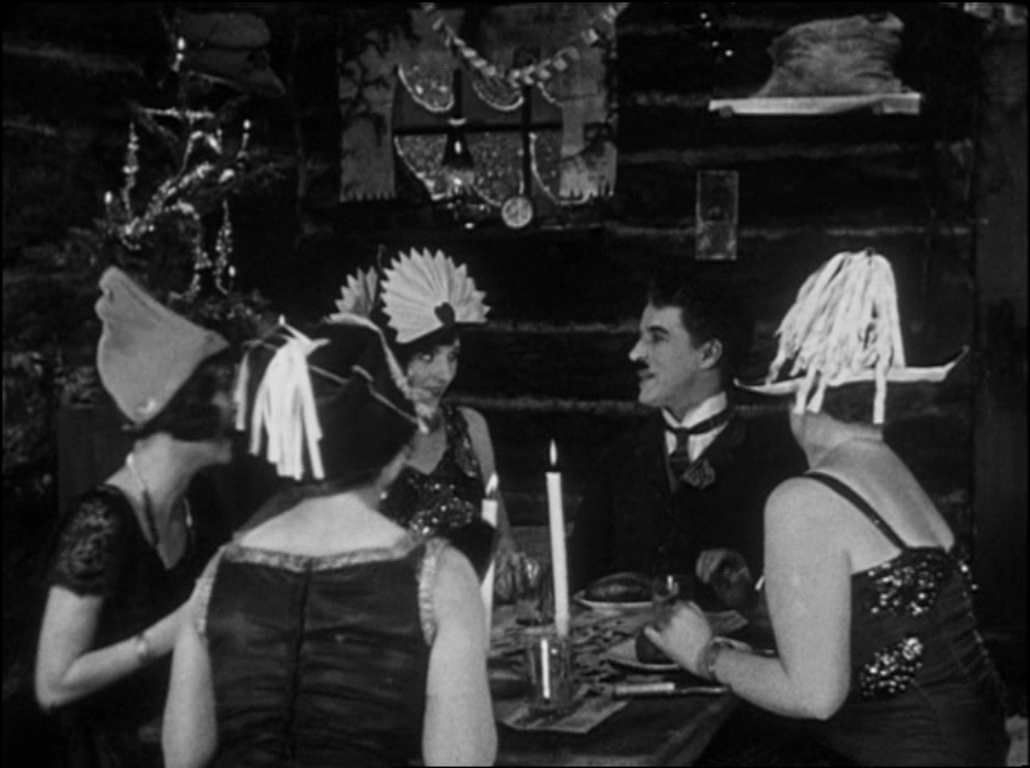 |
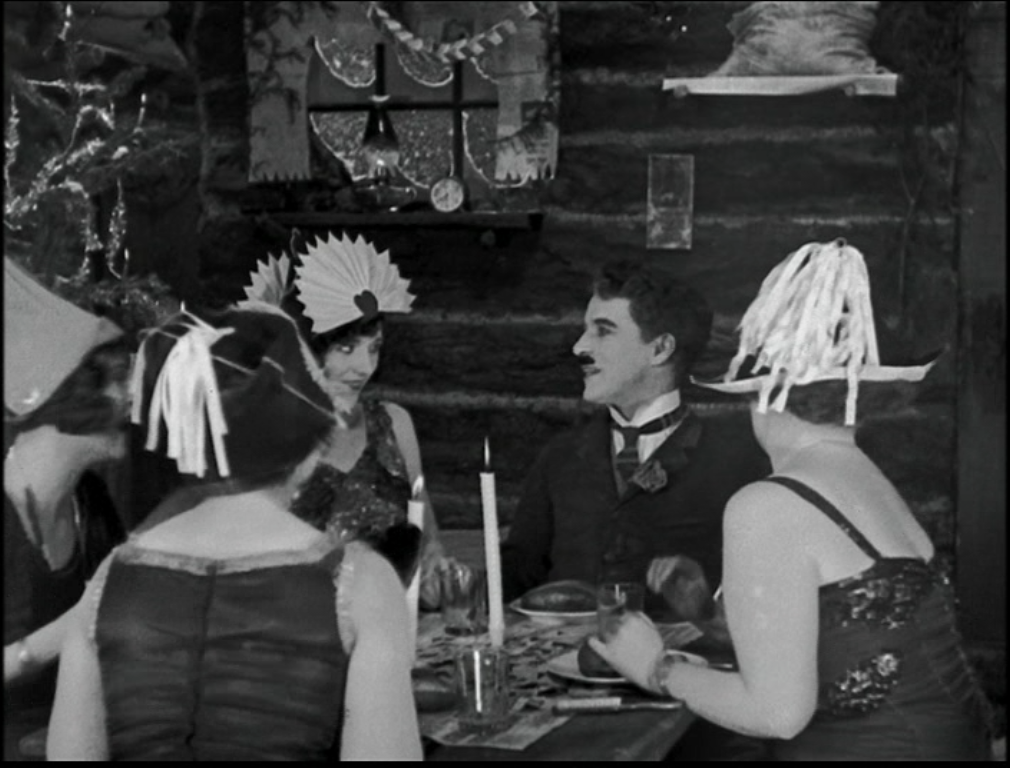 |
|
When David Shepard, through Image Entertainment, issued the 1942 sound version of The Gold Rush on laserdisc and then on DVD
(now sadly out of print), he was able to restore the full image.
He did not suffer from the same technical limitations that Chaplin suffered in 1942.
He could combine the entire image with Chaplin’s soundtrack.
I’m certain Charlie himself would have been tickled pink.
As David noted on the back cover:
“Extraordinary quality achieved from digital mastering of a full-aperture negative in the Chaplin archives.”
When Image Entertainment’s license expired and the Chaplin estate licensed the works to MK2/Warner Bros.,
the Chaplin family decided to go with Charlie’s final word.
Apparently too few people have an understanding of the technical issues to make an informed decision about what is and isn’t truly authentic.
So, ironically, the out-of-print Image Entertainment edition had the complete image
whereas the authorized edition put out by the Chaplin estate through Warner Bros. video did not.
The major studios understand that no commercial cinema these days will show the entire image,
and so their films (with the rarest of exceptions) are composed for cropping.
Often, especially in countries outside of North America, the image is masked directly in the camera.
This, of course, can lead to the opposite problem.
Below are some screen captures from a film that was shot with a 1.85:1 mask in the camera.
These I took from the Koch Media DVD.
Next to it are similar captures from an older VHS tape.
|
| DVD from Koch Media (2007) | VHS from DeltaVideo (1990) |
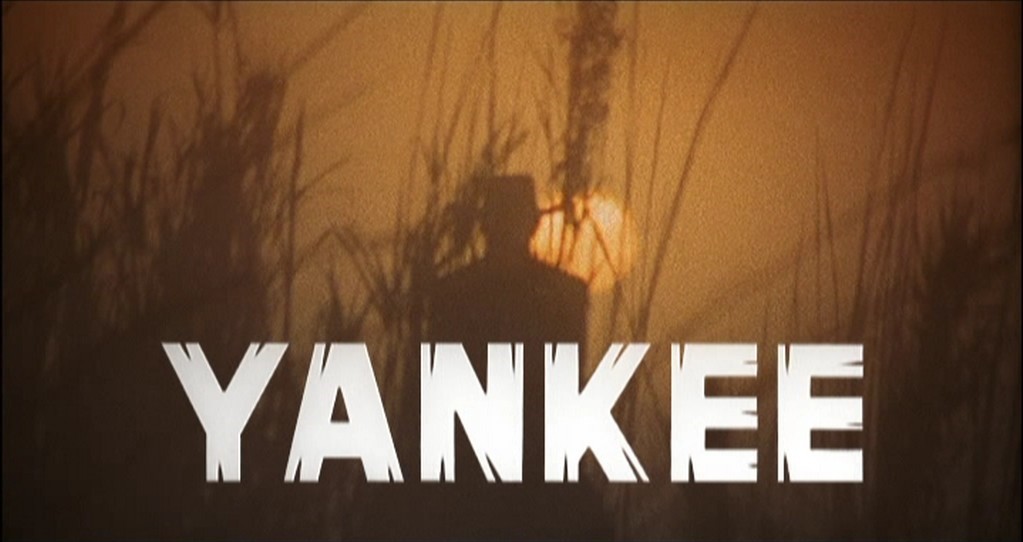 |
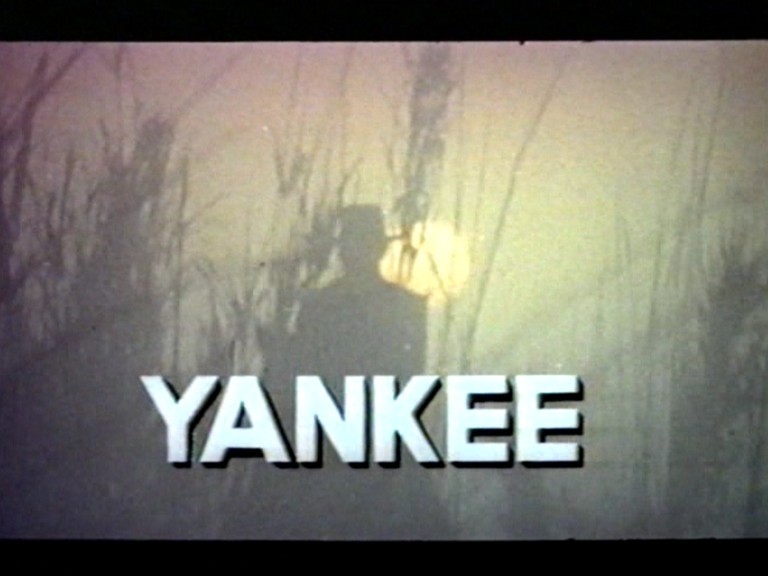 |
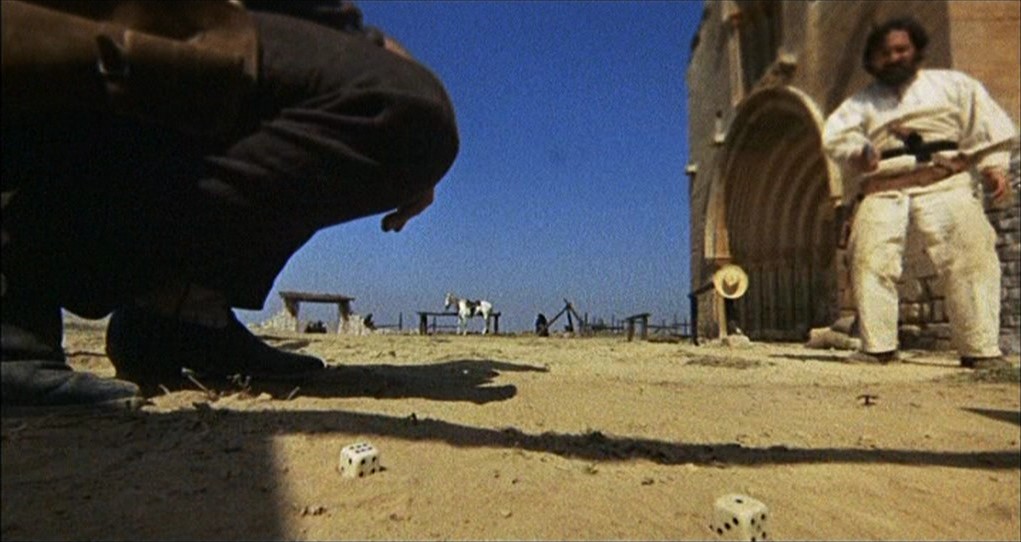 |
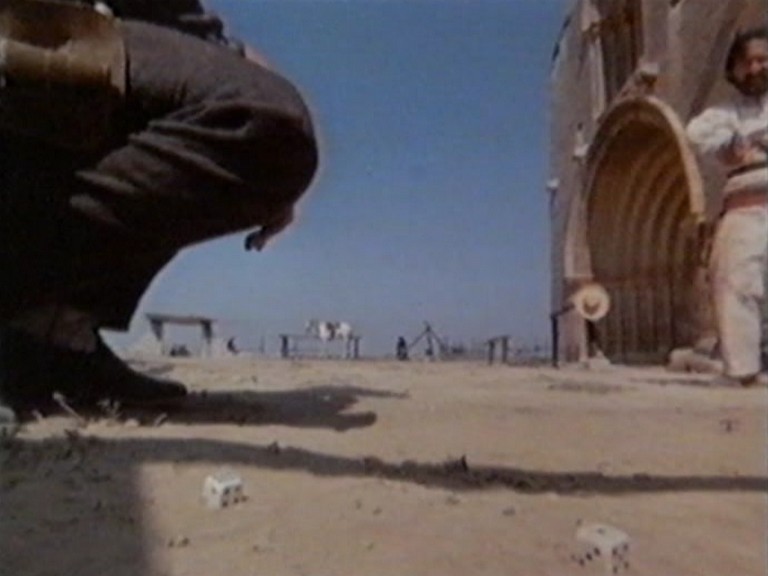 |
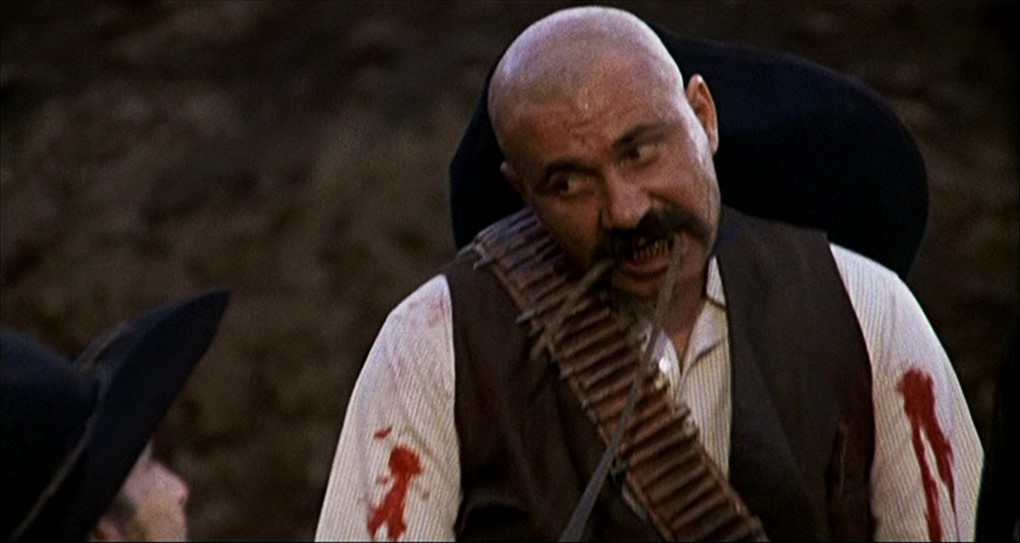 |
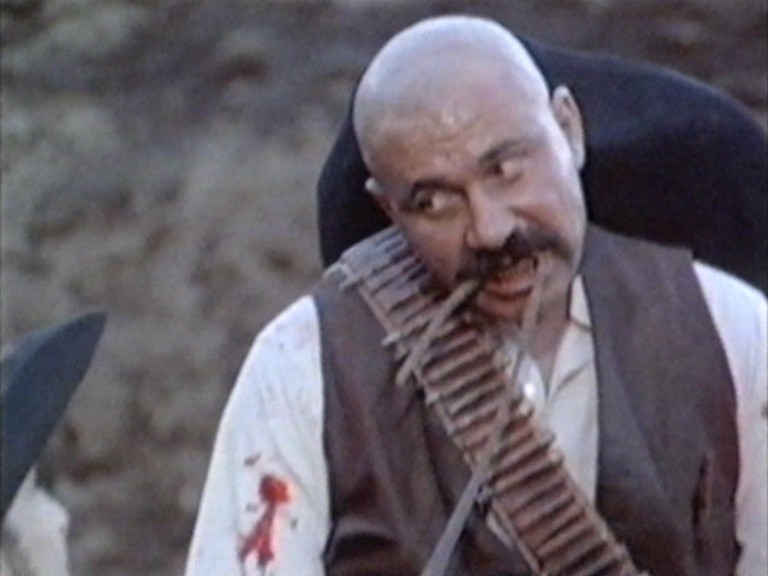 |
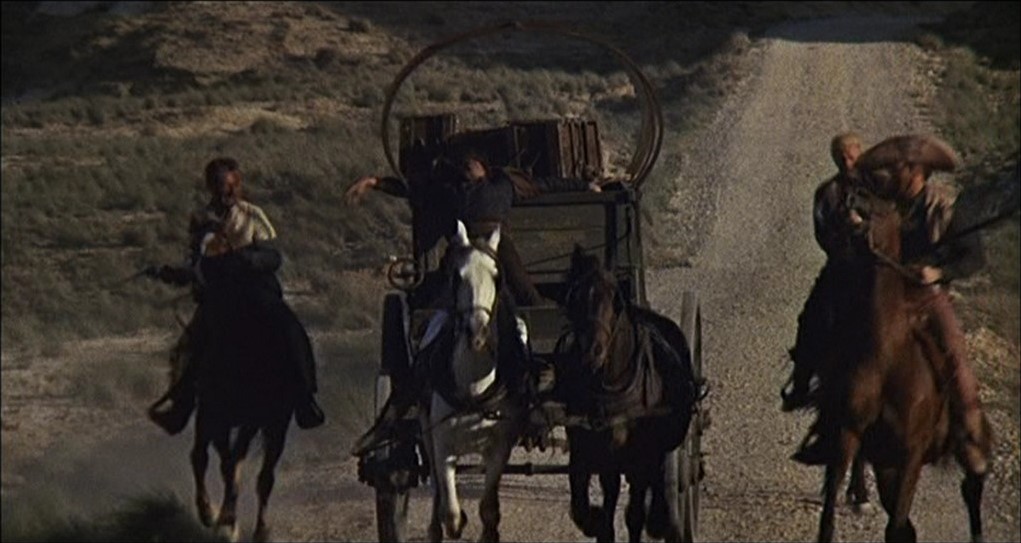 |
 |
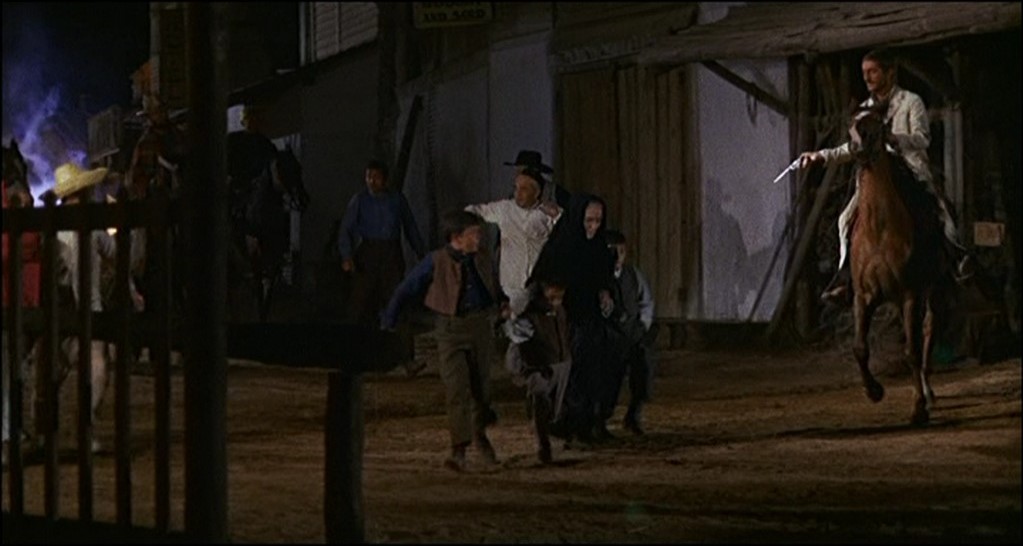 |
 |
 |
 |
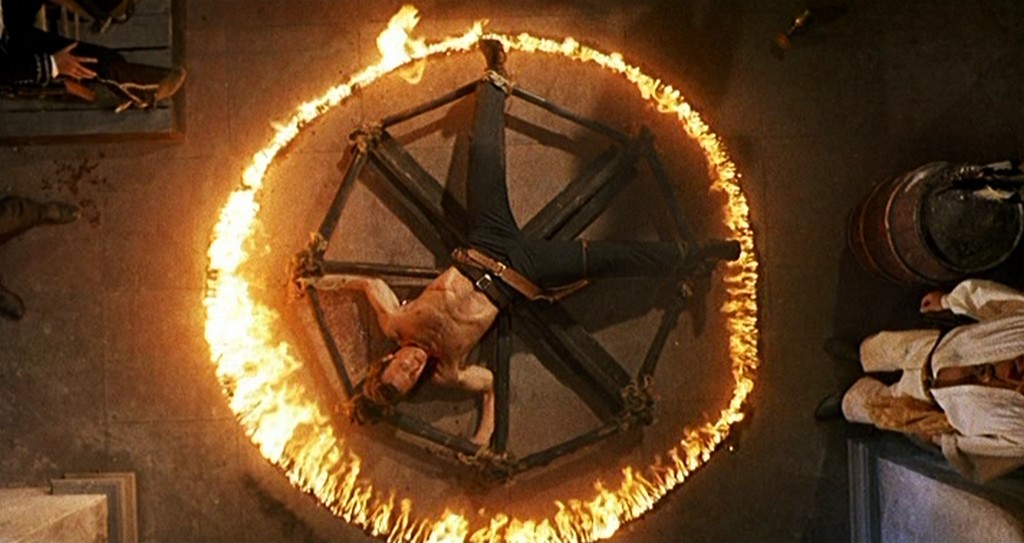 |
 |
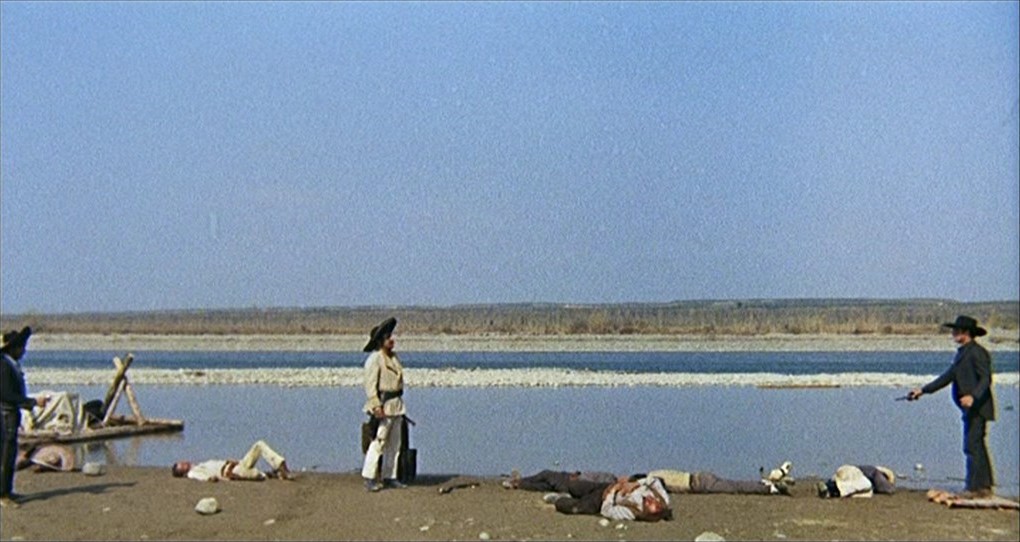 |
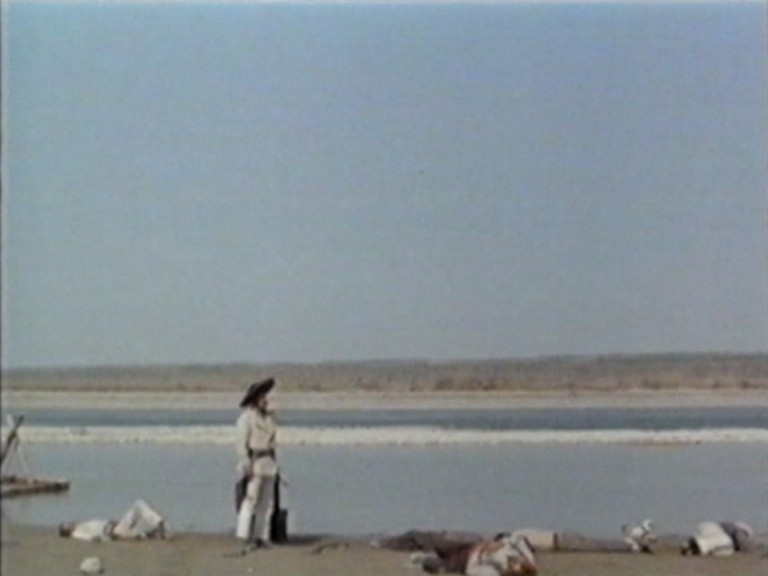 |
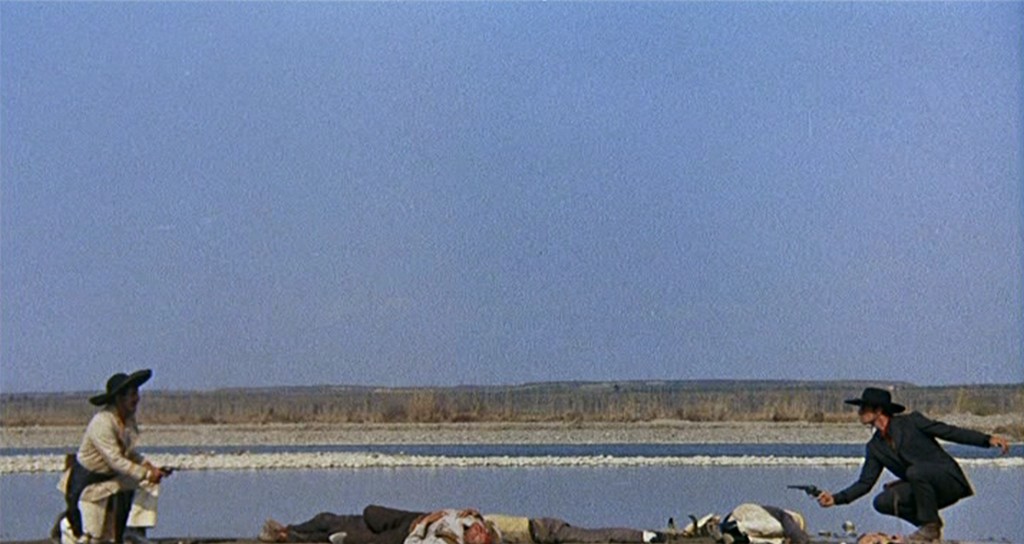 |
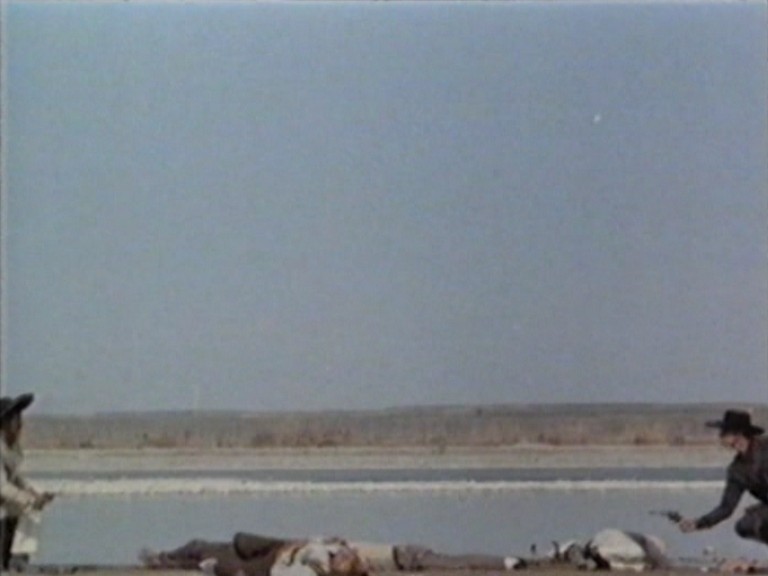 |
|
So maybe now you’re getting the idea that if you want to watch an old movie, you would be better off with the video,
but that if you want to watch a new movie on video, you had better choose the widescreen edition.
If that’s what you’re thinking, you’re leaping to a conclusion.
Below are some frame captures from a VHS tape (from CVC in Italy) of a movie that was shot at 1.66:1,
and which should be projected with an aperture measuring .825" × .497".
Actually, as with so many movies, the camera aperture was a little bit overfiled,
and if we measure the image on the film, we see that it is about 1.51:1,
a ratio that is never used in projection.
So a 1.66:1 crop would be right.
Now, to the right are similar frames from the DVD (also issued by CVC in Italy), which proudly boasts that it is widescreen.
The problem is that it is a different widescreen, namely, 1.75:1 (projector aperture measuring about .825" × .471").
Watch what happens:
|
| VHS | DVD |
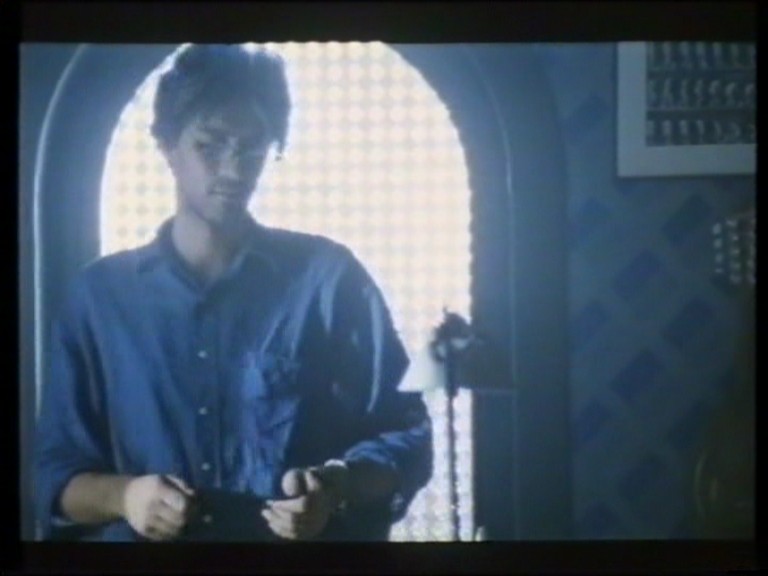 |
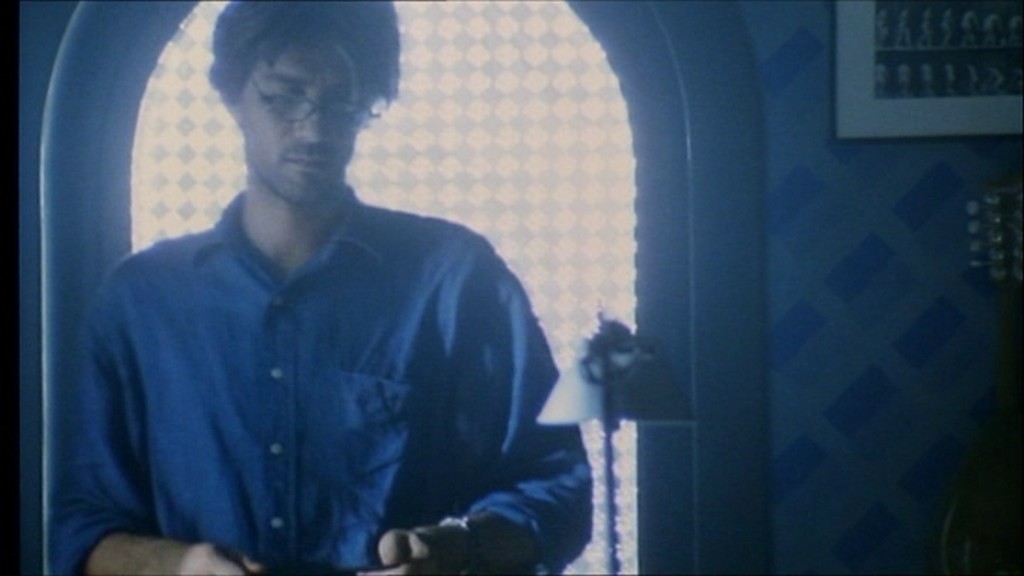 |
 |
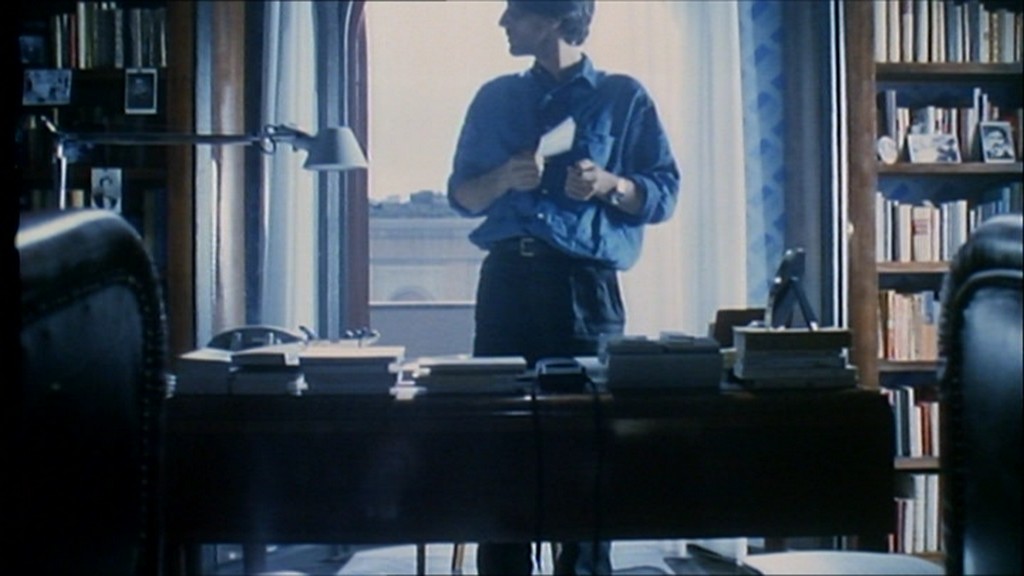 |
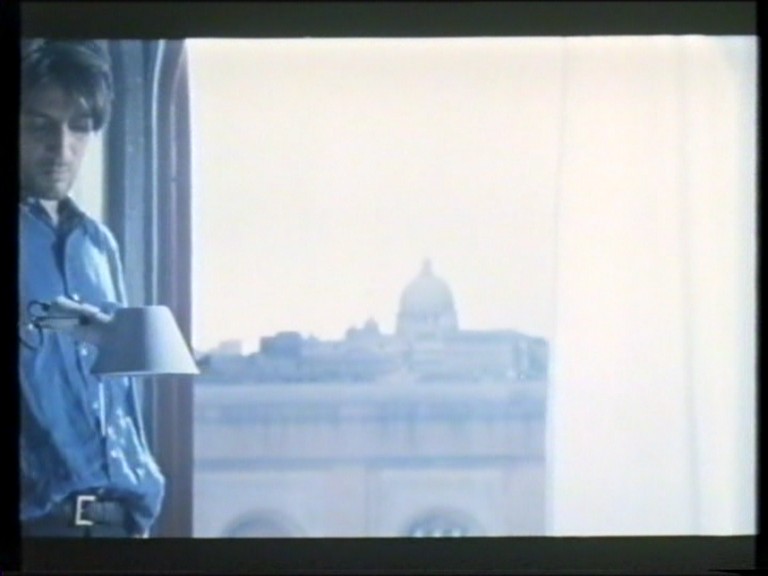 |
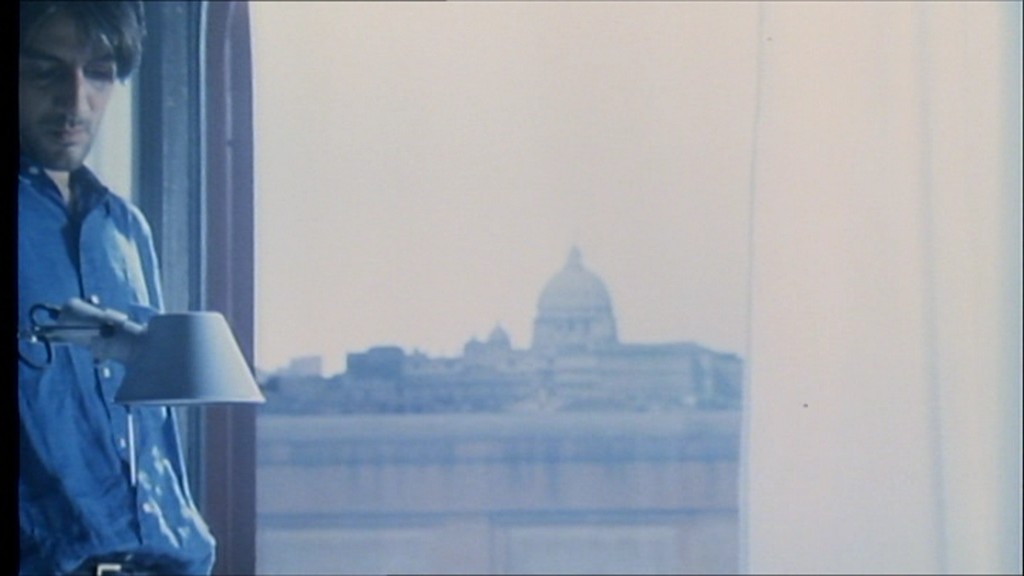 |
 |
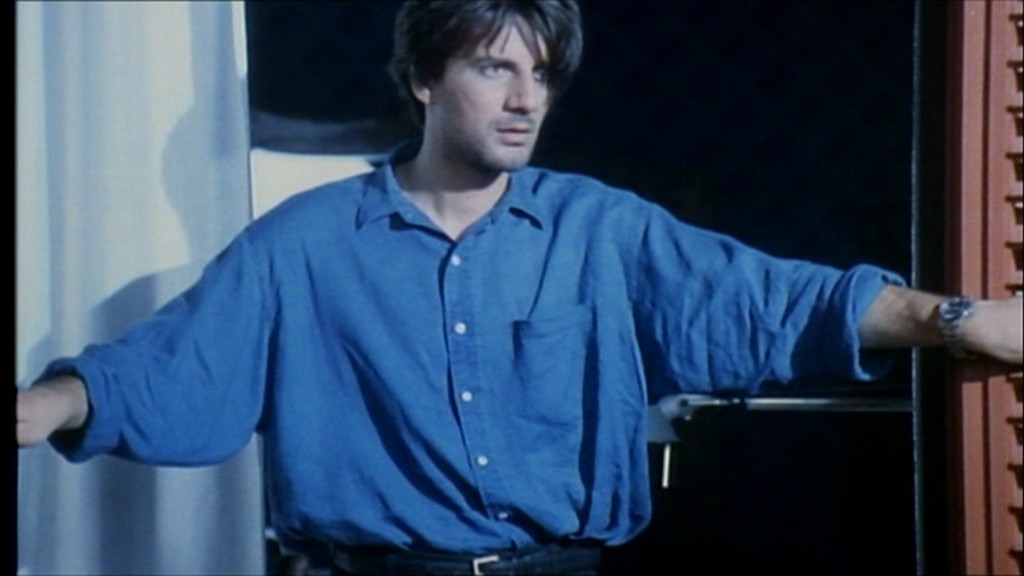 |
 |
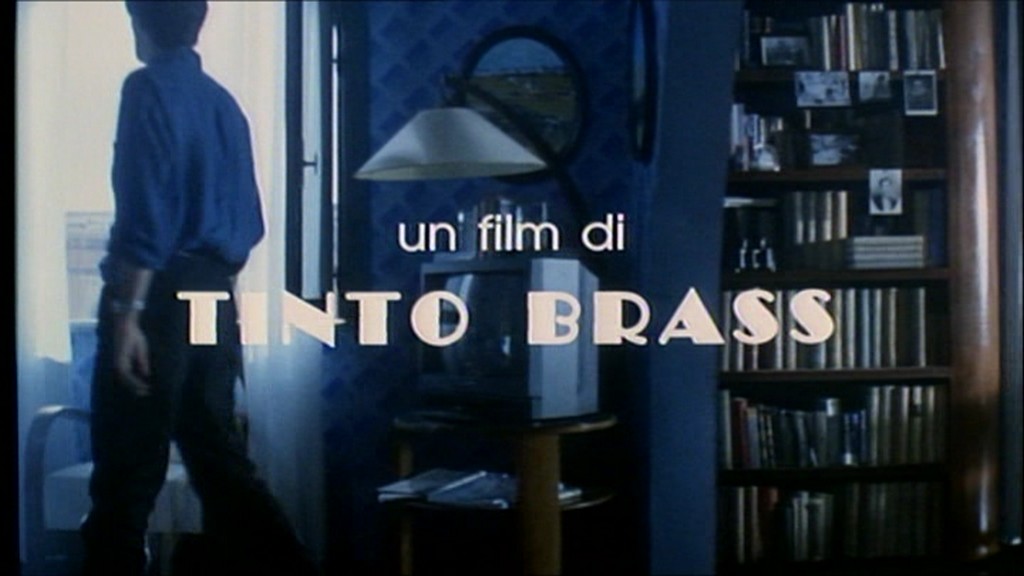 |
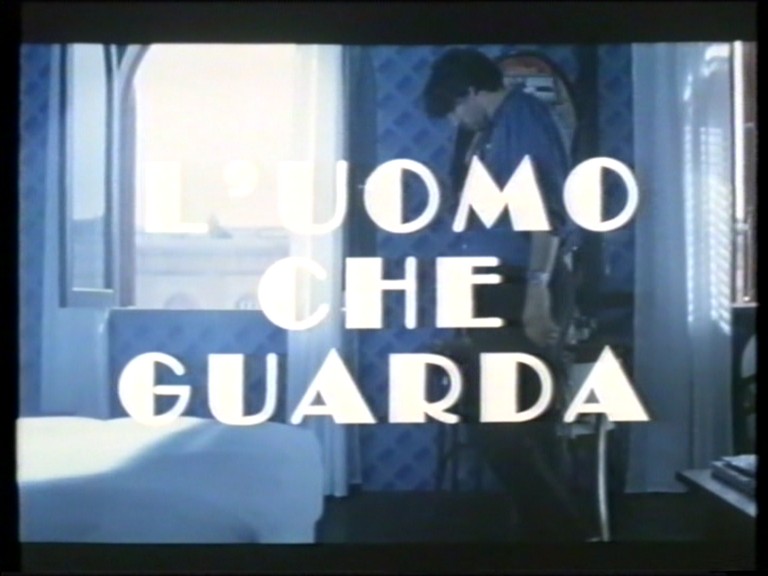 |
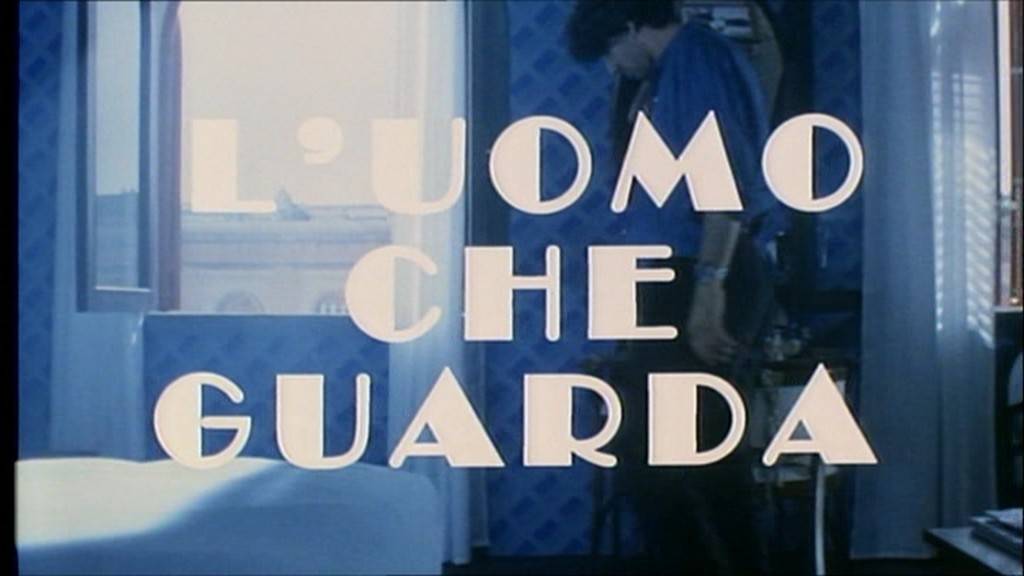 |
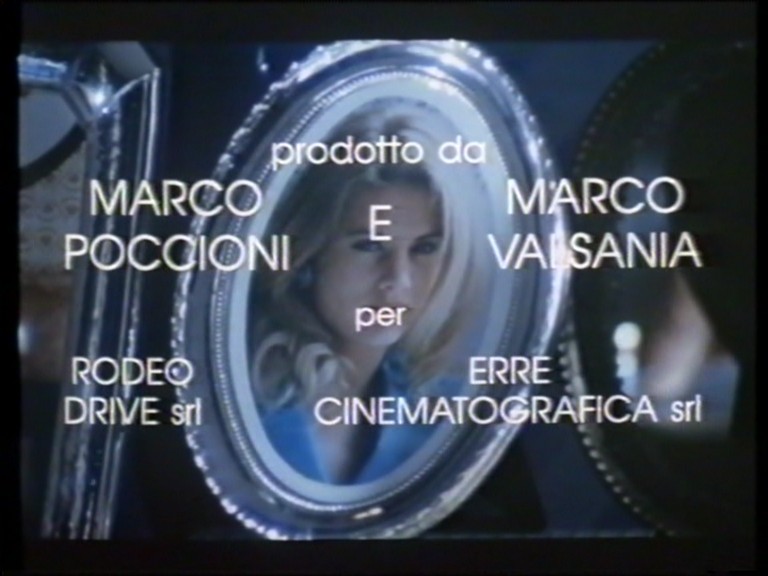 |
 |
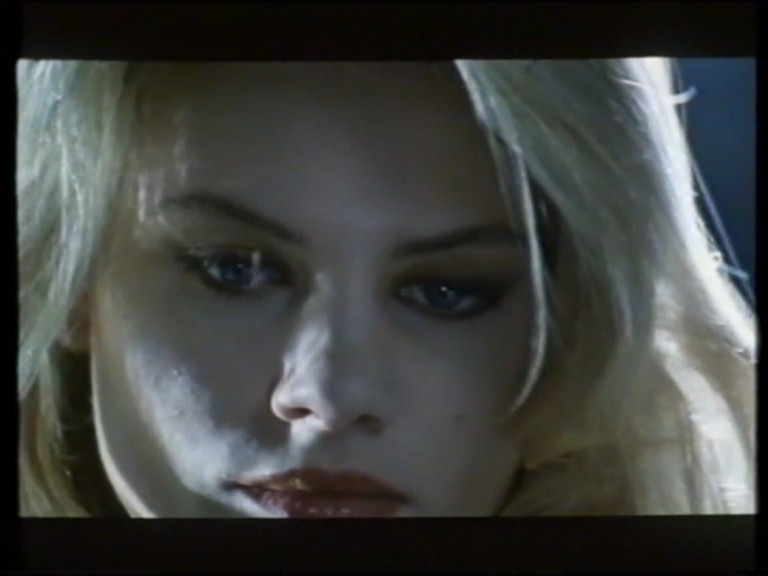 |
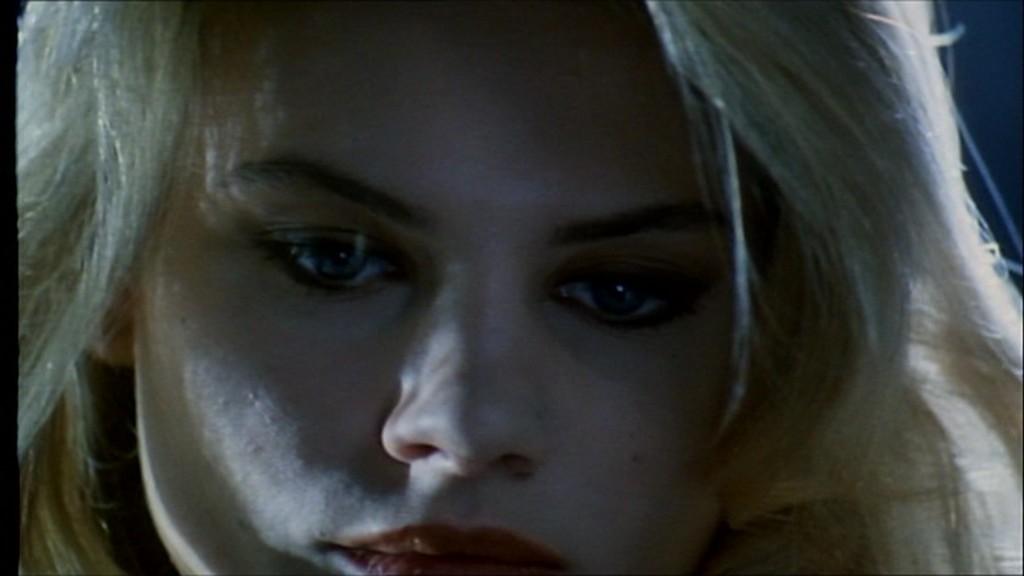 |
| This is one of the two or three shots mistakenly masked in the camera at 1.75:1. | |
 |
 |
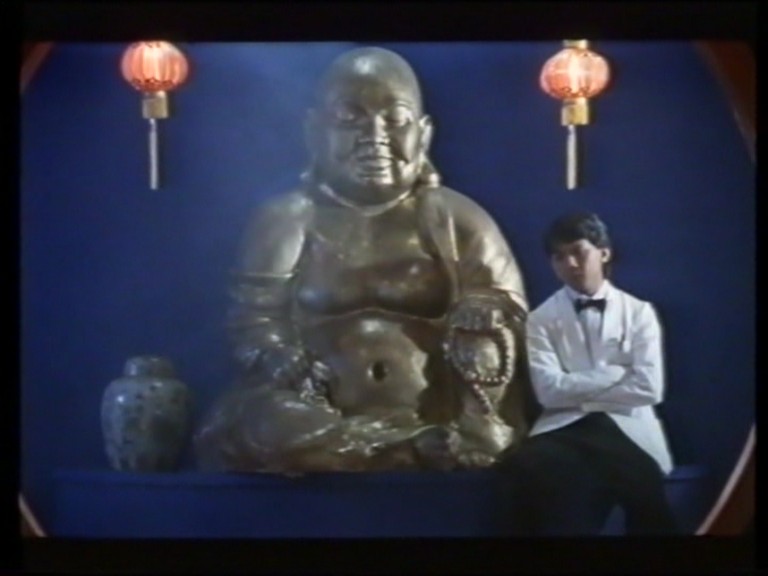 |
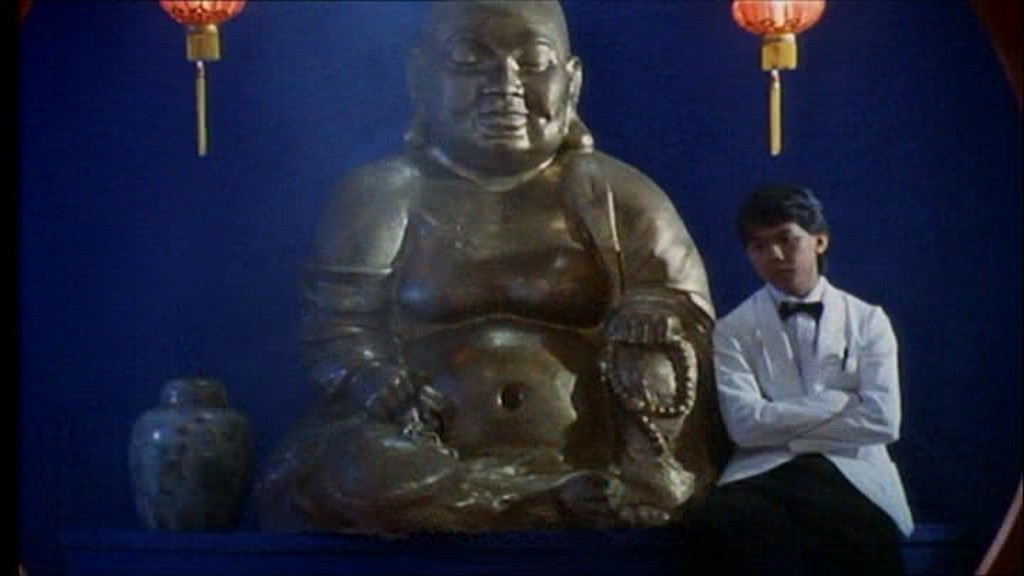 |
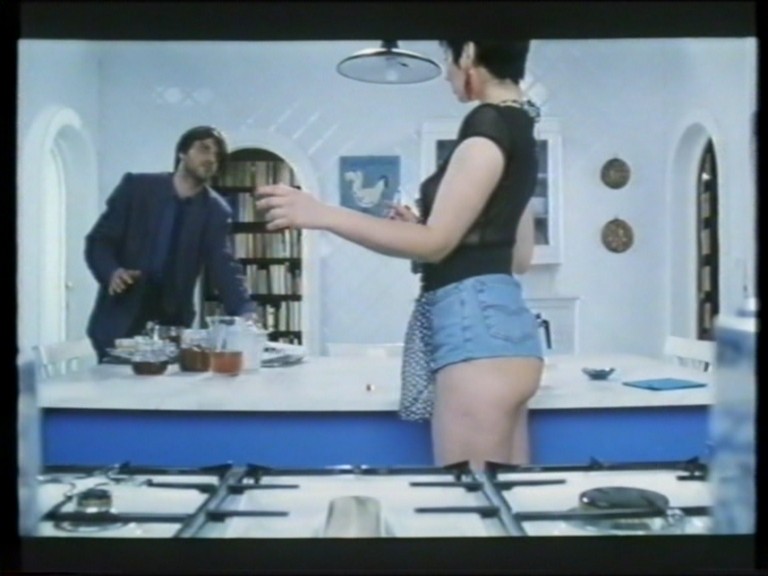 |
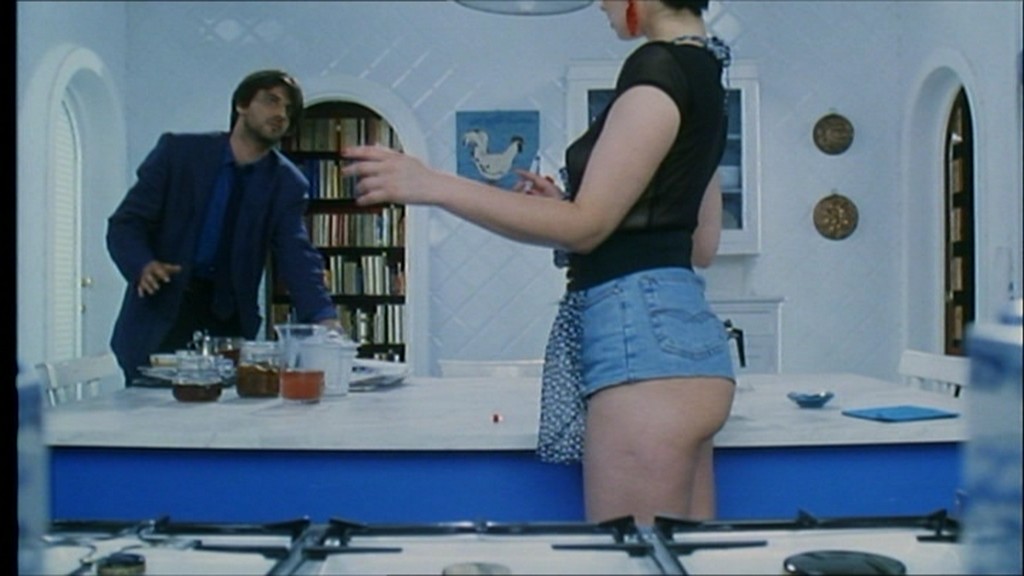 |
 |
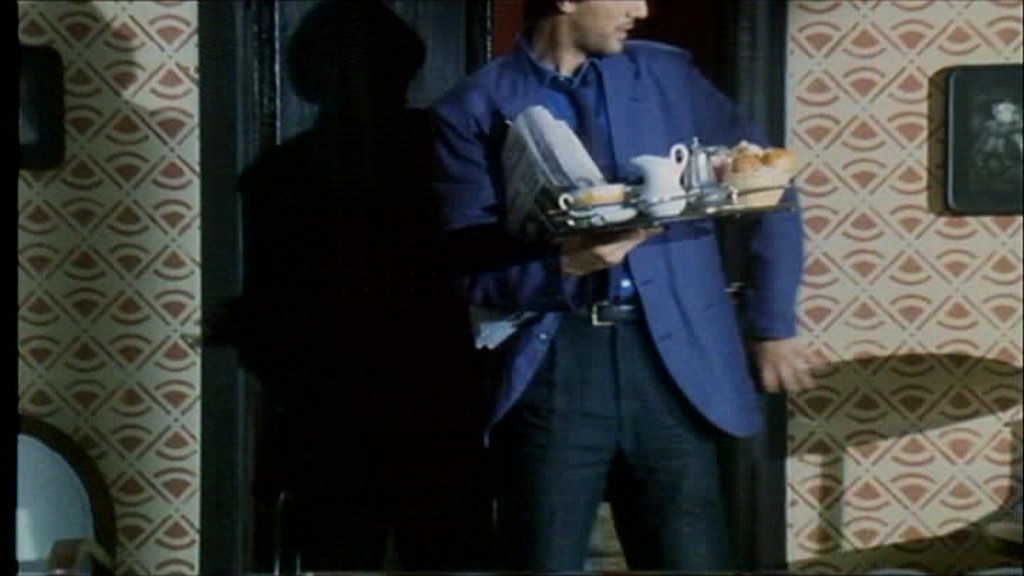 |
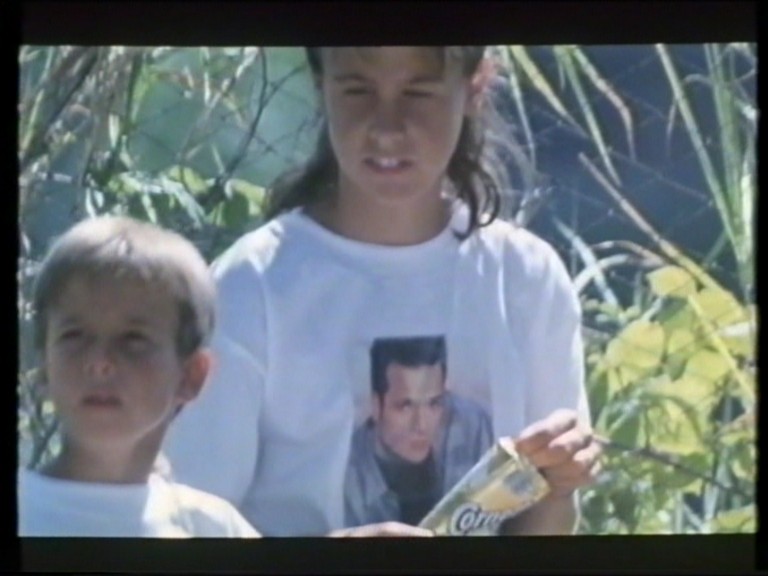 |
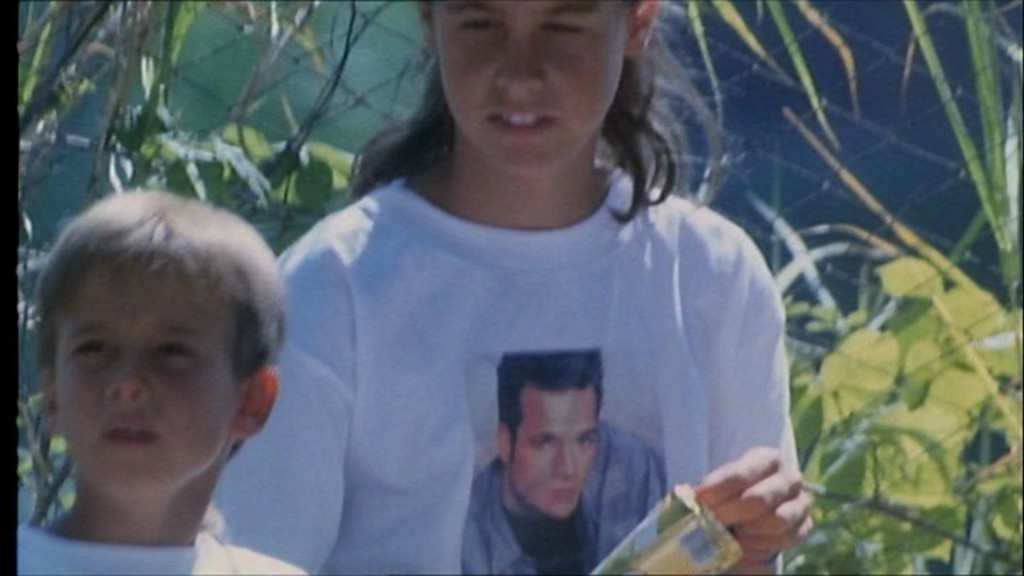 |
 |
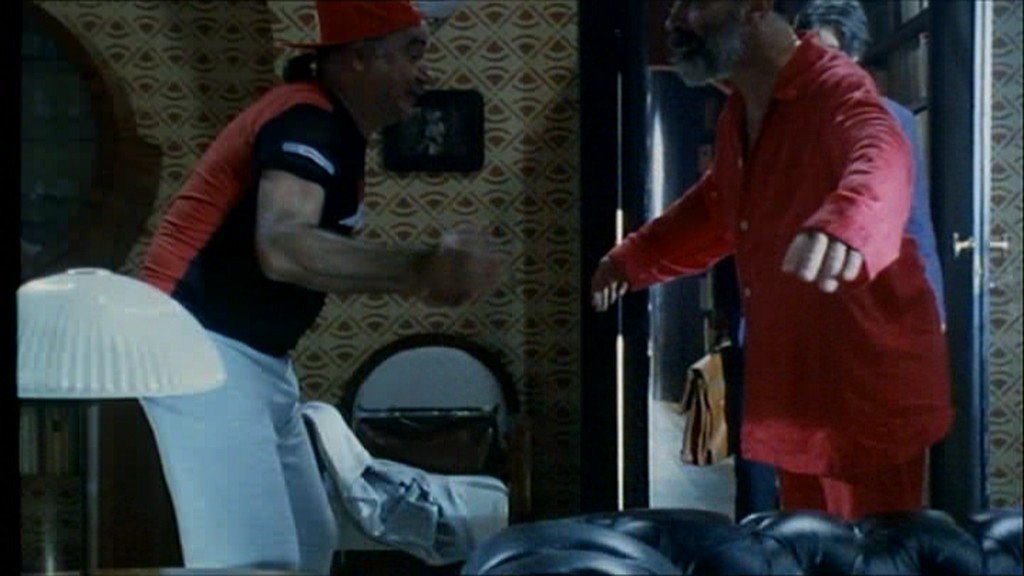 |
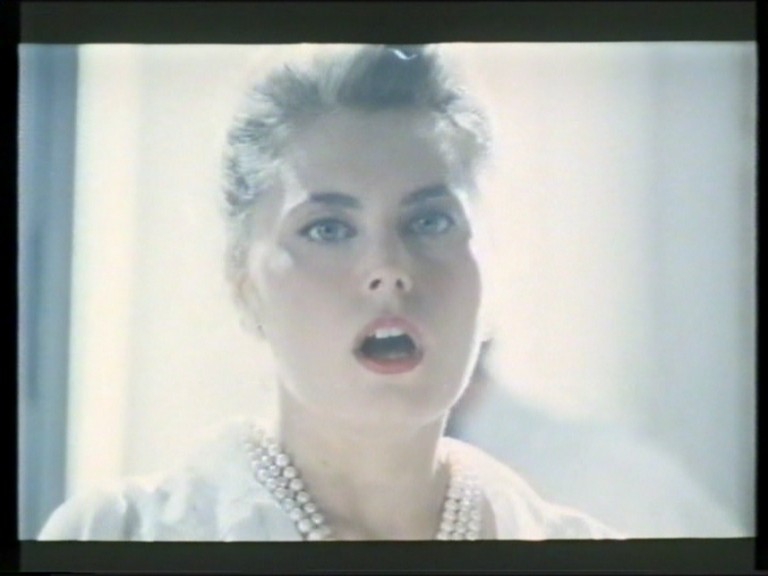 |
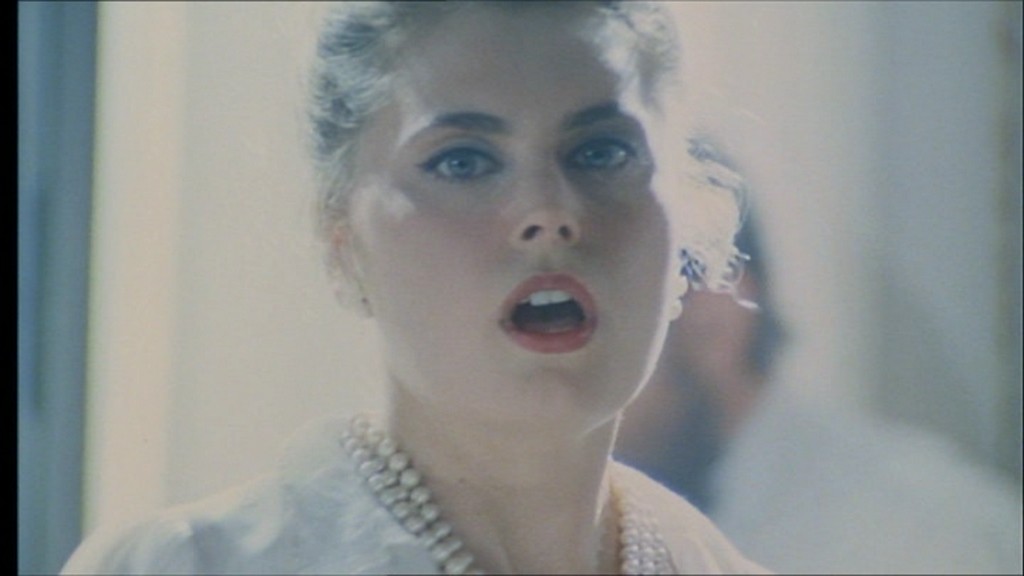 |
 |
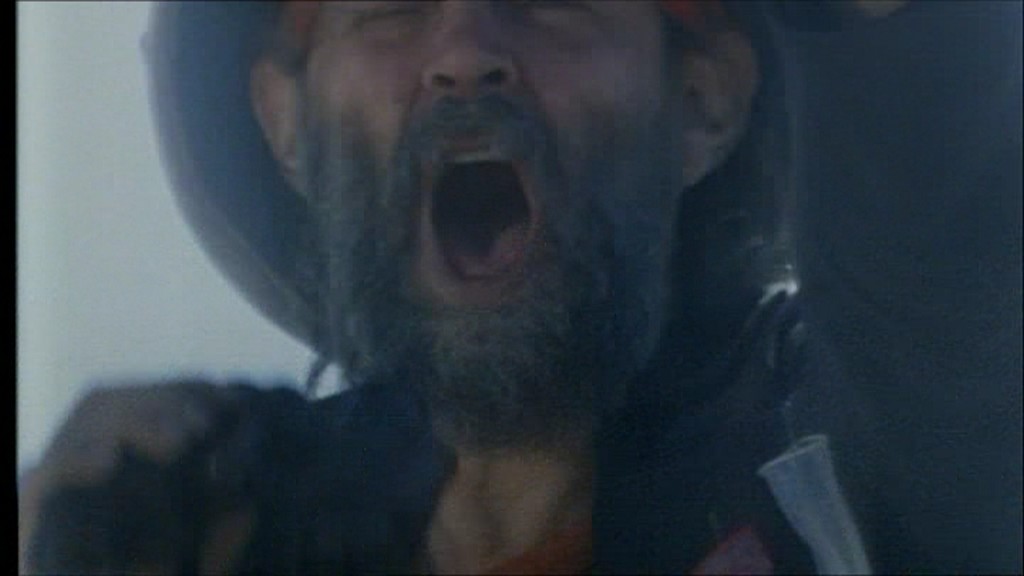 |
| Emotional turmoil depicted by a deliberately mistimed and undersized shutter. (This effect induces emotional turmoil in the projectionist, who will panic that the shutter clamp has slipped or that a gear has stripped.) The effect, of course, bleeds into the part of the frame that is masked off. | |
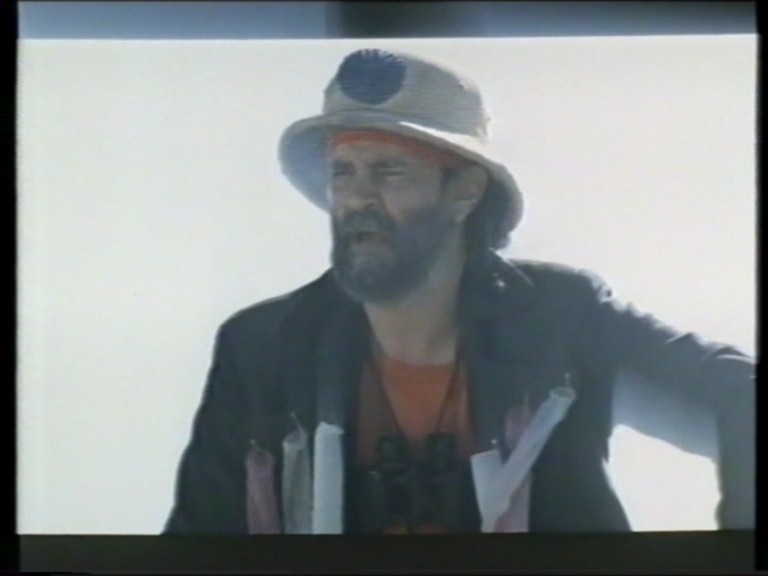 |
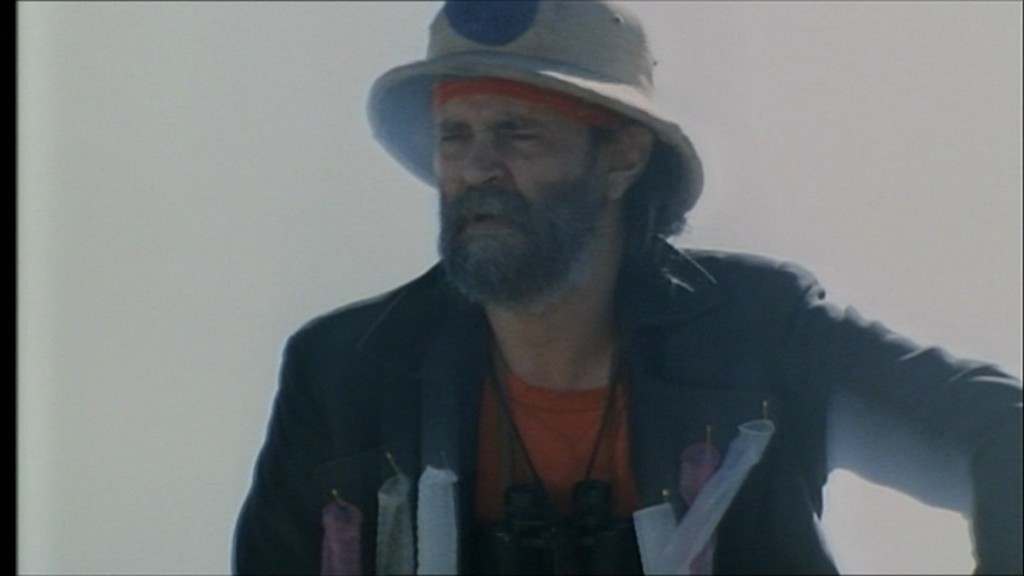 |
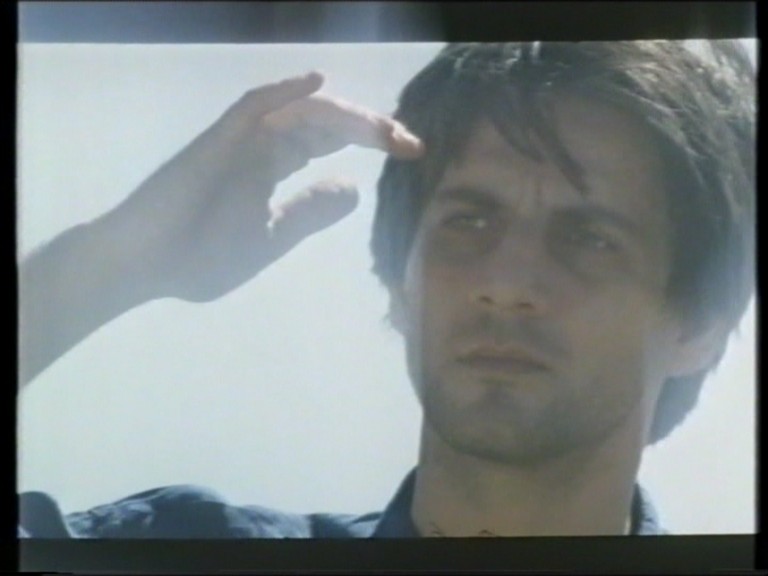 |
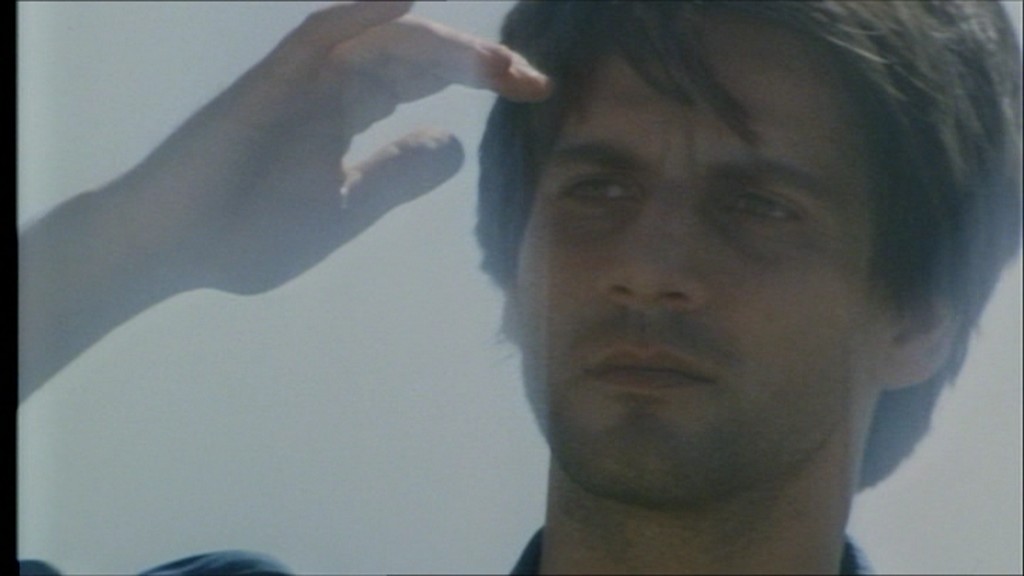 |
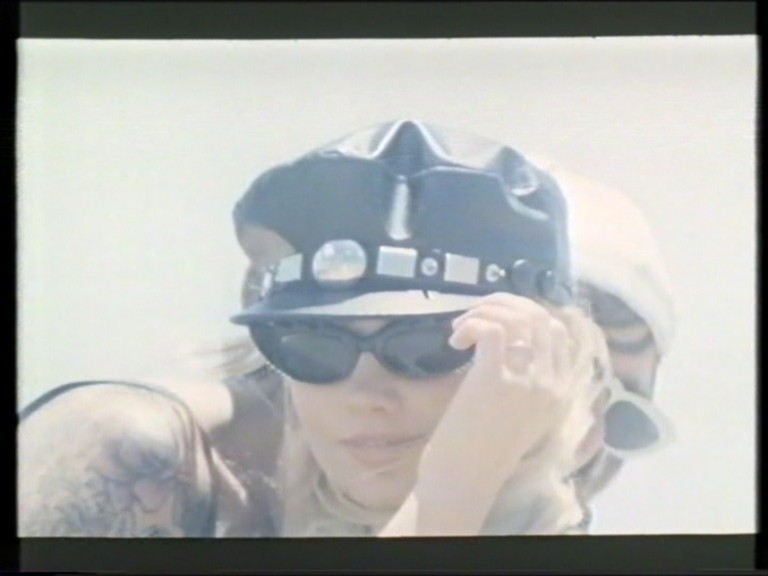 |
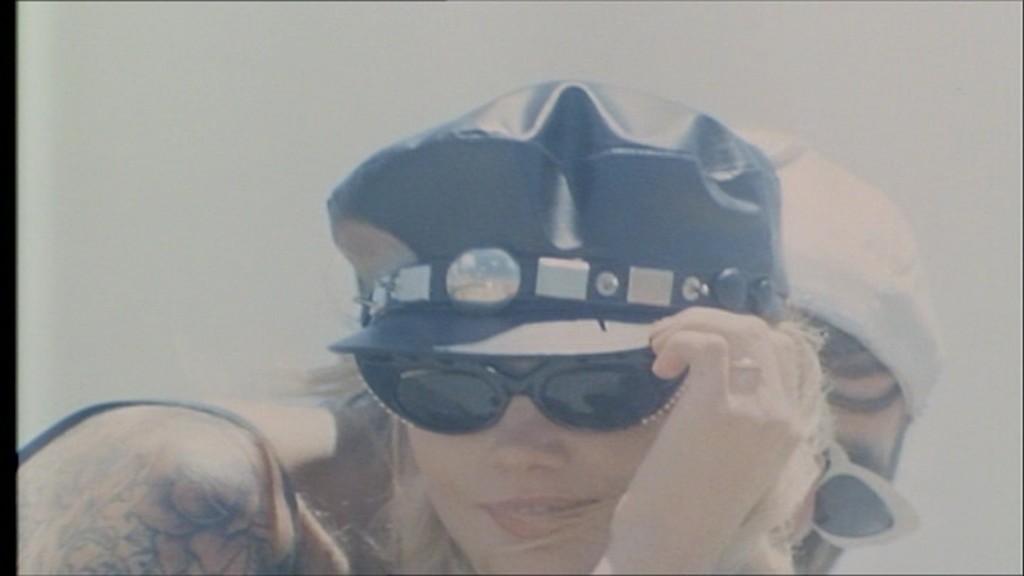 |
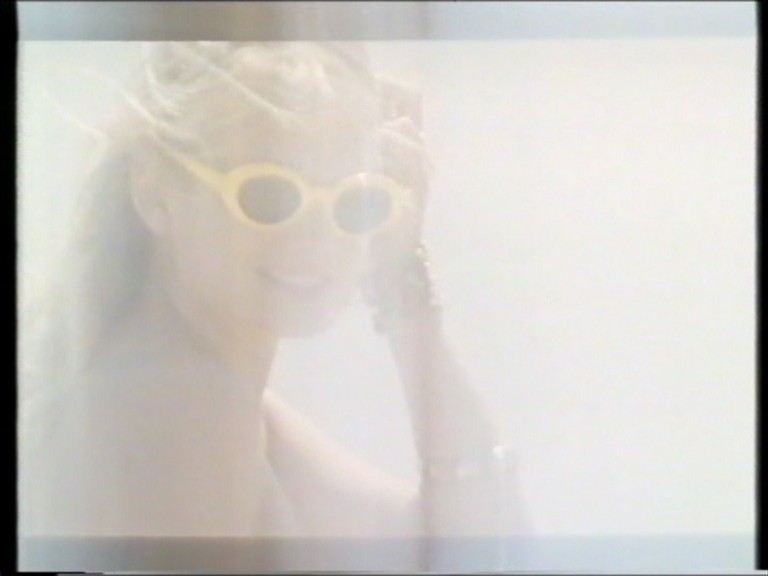 |
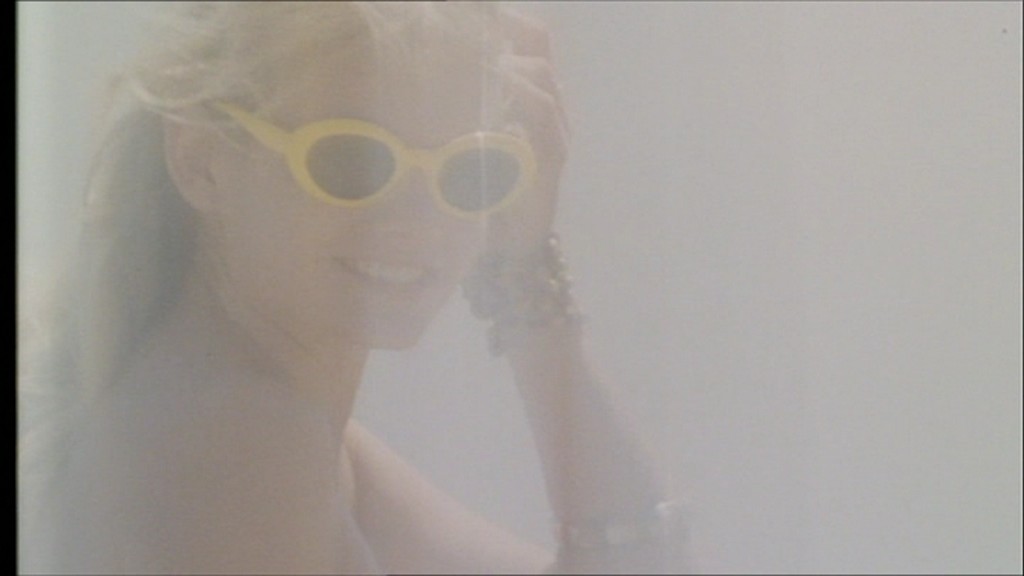 |
 |
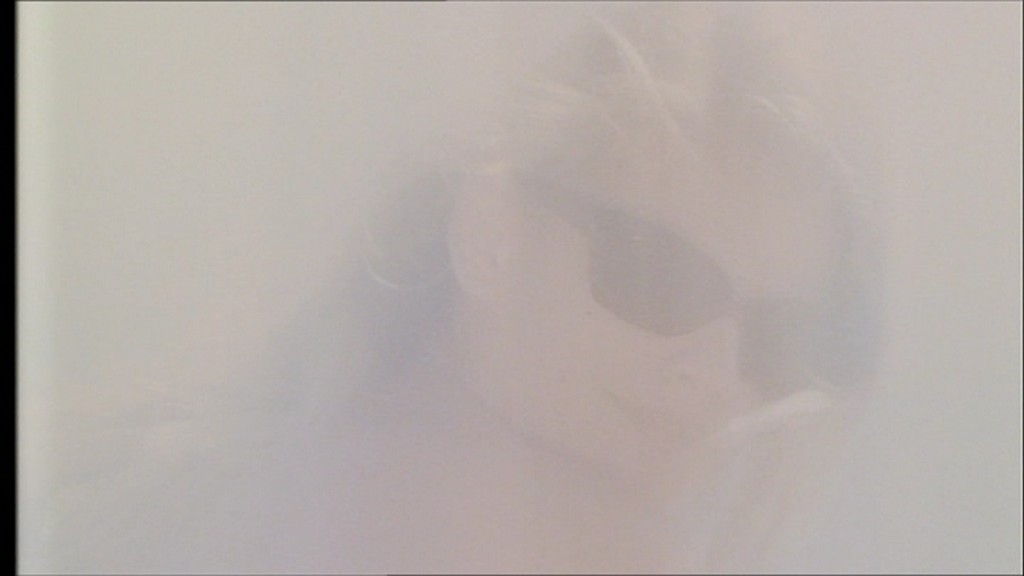 |
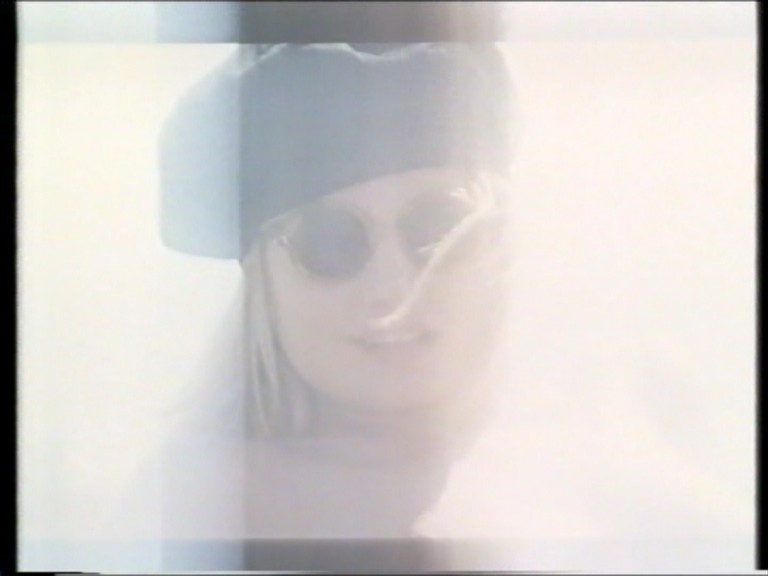 |
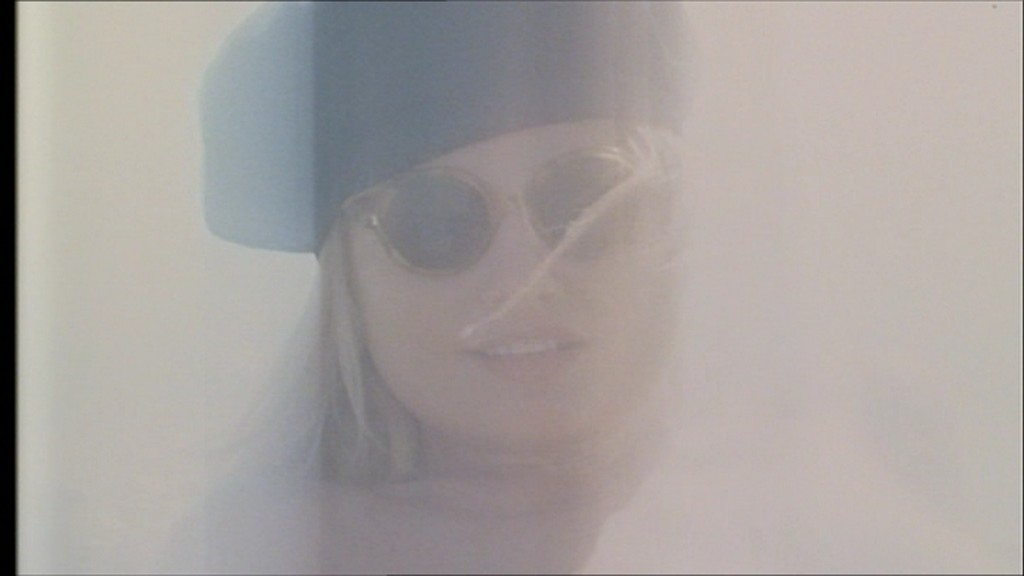 |
 |
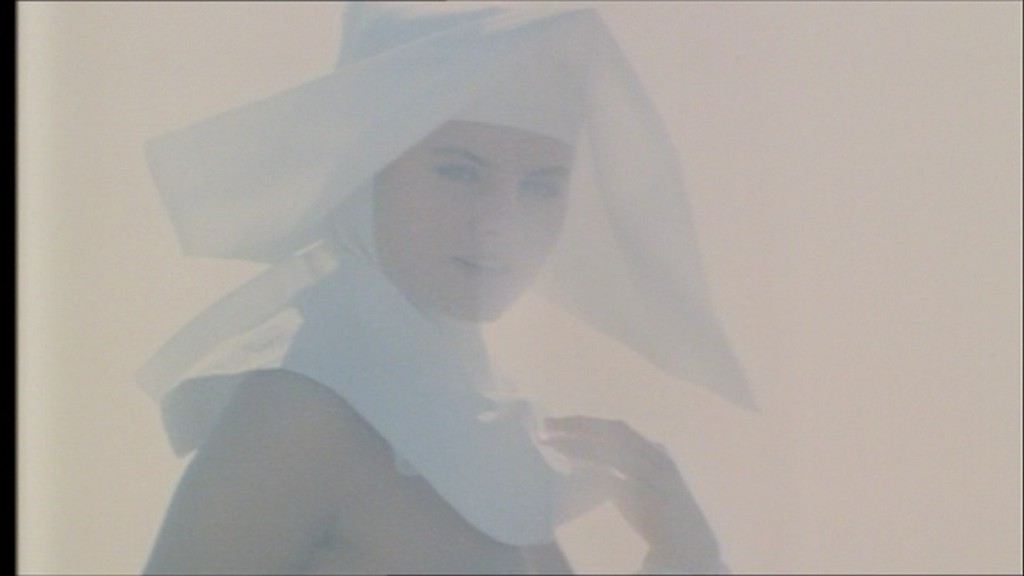 |
|
Little by little, I’ll be posting actual film clips as illustrations.
Click here to see what I’ve posted so far.
Also, for those three or four people on this planet who are interested,
keep scrolling down to the bottom of this page and you’ll see the common image formats for 35mm movies.
In the meantime, the above few frame grabs lead to my next gripe:
|
|
Whenever you go to a movie, there’s nearly a 50% chance that the credits will look something like this:
|
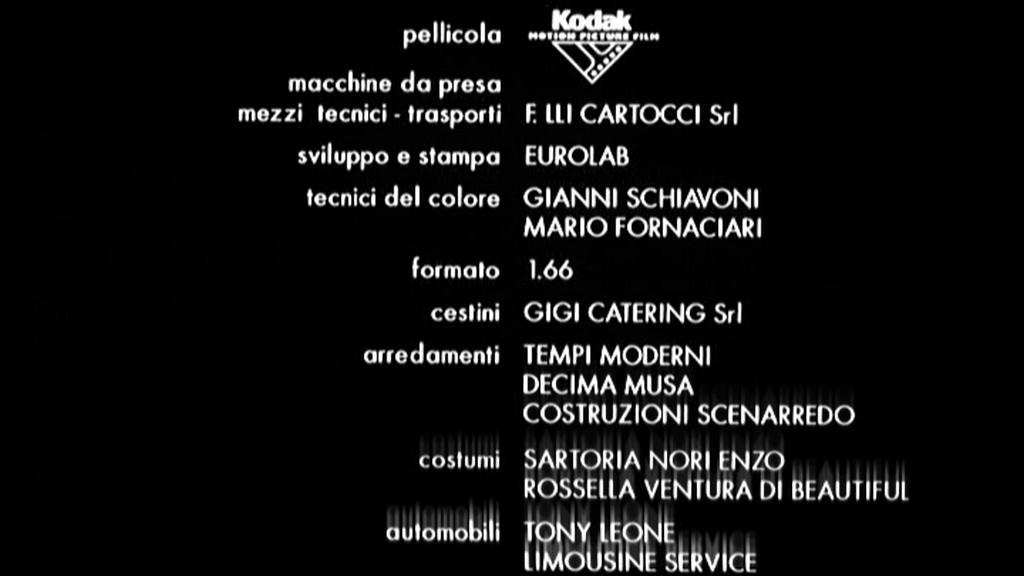
|
Isn’t that lovely?
And all these years you thought there was something wrong with your eyes, didn’t you?
Few people complain, because few people understand what this is.
And how can you complain about something you don’t understand and can’t explain or describe?
For all you know, maybe it’s supposed to be this way. Right?
Well, no, it’s not supposed to be this way (usually).
Mind you, though, that this fault is nearly impossible to see from the projection booth,
except through binoculars.
The light seeping at you from the lamphouse and the light flashing in your face from the film gate
and the reflected light beaming at you from the porthole window make you nearly blind to these subtleties.
But you can sure see this fault from the auditorium!
The problem is simple.
The shutter blade is “out of time,”
meaning that it’s just a smidgin late in cutting off the light
before the projector starts moving the film from one frame to the next one.
Sounds like it’s difficult to fix this problem, doesn’t it?
Hardly.
On most projectors there’s a knob called SHUTTER.
Turn the knob until the problem goes away.
On some projectors, though, it really is a major problem.
On a Cinemeccanica Victoria 5, for example, there is no SHUTTER knob.
There are few gears; instead there are pulleys and timing belts.
One of those belts slipped a notch.
To fix the problem, you have to stop the show,
pull a dirty greasy filthy grimy timing belt out,
Then there’s the Norelco AA.
I’ve never run this type of machine,
but it’s seductively beautiful
and can run nearly any film in the world without any problem.
The Norelco AA has only one fault: no SHUTTER knob.
If the shutter clamp slips, you just have to shut down the show,
open up the mechanism, and spin the shutter clamp around to the precision markings.
Apparently the markings are so clear that it’s difficult to make a mistake.
But the more popular projectors — Simplex, Century, Brenkert, and so forth —
all have SHUTTER knobs.
Of course, the SHUTTER knob offers only so much adjustment.
If the shutter clamp slips way out of alignment,
there’s no choice but to stop the show,
open up the machine, loosen the two bolts on the clamp,
spin it back into approximate alignment, tighten it back down, put everything back together,
and start up again.
That took a few minutes and now everyone wants to lynch you.
But at least you’re back on screen,
and if you didn’t get it quite right, no problem,
because now you can fine-tune the image with the SHUTTER knob.
Now that we’ve covered this problem, which you’ll see nearly 50% of the time,
we can look at the problem you will see at cinemas nearly the other 50% of the time:
|
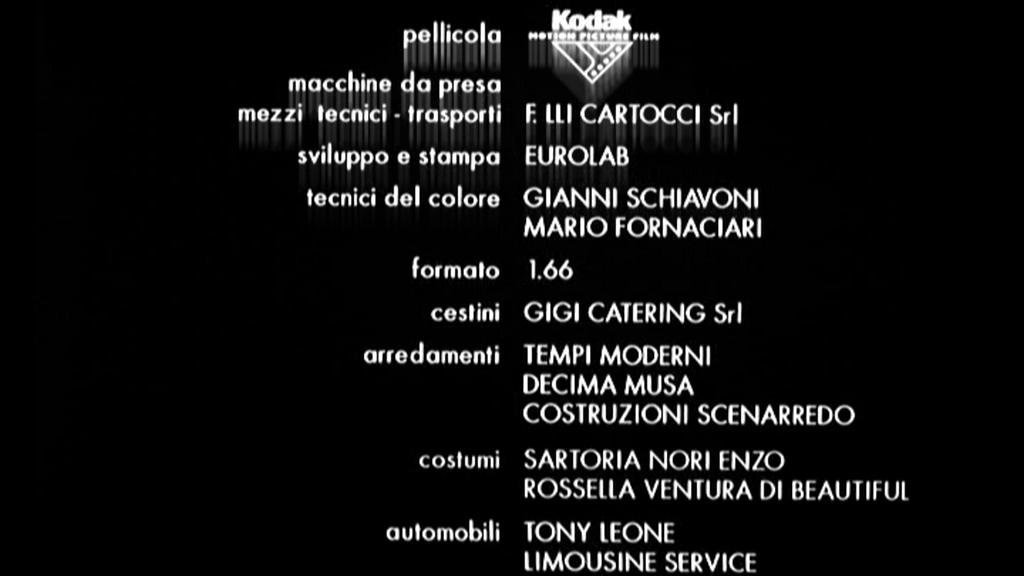
|
Does this look familiar?
It should.
Here, instead of the shutter closing a little bit late,
it’s opening a little bit too early.
But basically it’s the same problem, with the same solutions.
When you don’t see simply either one or the other of the above problems, that’s because, in all likelihood,
you’re seeing both of them at the same time:
|
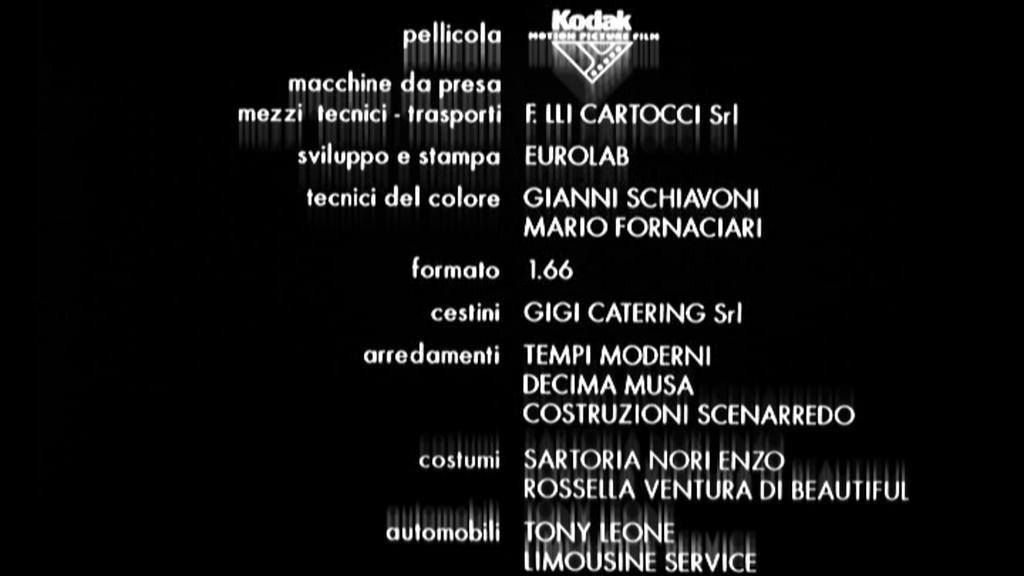
|
So what causes this?
In my experience, there could be at least one of several things wrong.
The most common analysis would be that your management purchased Century projectors,
without opting for the 90° shutter blades, which are not the default blades.
The default blades are 82°.
Why that is, I have no idea.
Maybe 82° blades can work in ideal circumstances.
But they didn’t work in the circumstances I had to deal with.
There’s also a fair chance that your manager brought in some projectors or parts from a
The third possibility is that there is too much play in the gears.
Solution: Shut down the show and tighten up the gears and shafts,
and check to see if any of the bolts have sheared or broken or fallen out.
The fourth possibility is that a gear stripped.
Solution: Replace the gear.
If you don’t have a spare on hand,
give everyone a free pass and have your supplier FedEx a new gear over right away.
And, of course, the problem could possibly be more than one of the above, in combination.
Actually, there’s a fifth possibility, and yes, it does happen: a lab error,
causing this “travel ghosting” directly on the film print.
When this happens, there’s nothing the projectionist can do short of resign.
There’s even a sixth possibility:
The shutter in the camera was out of time when the movie was being made.
Yes, this happens too.
Stanley Kubrick instructed his camera crew to do this for a scene in Full Metal Jacket.
And my favorite filmmaker of all, Tinto Brass, occasionally does this to indicate emotional turmoil, as illustrated earlier.
The effect can work altogether too well, if you get my drift.
Finally, there’s the seventh possibility, and this one is truly bizarre.
Many moons ago, at an eight-plex, there was one projector that had this problem,
and the reason was that there was too much play in the gears.
The machine was a Monee,
a cheap Century/Westar knock-off.
I went through that machine countless times, and no matter how much I tightened things up
(breaking the cheap, dinky little pot-metal bolts in the process),
there was still too much play and the shutter shaft was bouncing all over the place.
After months of scratching my head, I saw what the problem was.
The factory had made an error when machining the base of the projector.
It was the smallest fraction of an inch too wide, forcing the shafts apart.
There was no way on earth to remedy that problem.
I could have hidden the problem by spending my own money
to purchase and install adjustable shutters and expand them to 100° or so,
but although that would have helped the image on screen, it would not have solved the underlying problem,
which I was sure would lead to break-downs within a half-year or so.
And to do such a thing would have created yet another problem:
I would have been fired for tampering with the company’s machines.
Well, I never got to witness the breakdowns, because I was soon fired anyway.
The cinema closed down a few years later, and it looks like Monee closed down too. Good riddance.
Really, you shouldn’t go to movies, at least not mainstream movies, and at least not at mainstream cinemas.
Give it up. They’re dumb.
With the rarest of exceptions, movies are horrible, insulting, stupid, clichéd, stultifying, numbing,
brainwashing, unconvincing, annoying, irritating, unfair, propagandistic, classist junk designed to
reinforce racism and soften your attitudes toward those in authority.
Yechhhh!
But if you do decide to pay the ten bucks to have your intelligence insulted by a lousy Hollywood movie
and further enrich its already too-rich producers and “stars,”
at least now you’ll understand what the problem is.
The problem is a mistimed shutter.
And then you can complain and complain and complain
until the manager finally gets fed up with you and calls the police to escort you out of the building
and instructs his staff never to let you in again.
When you attend a movie, chances are pretty slim that the picture will look like this:
|
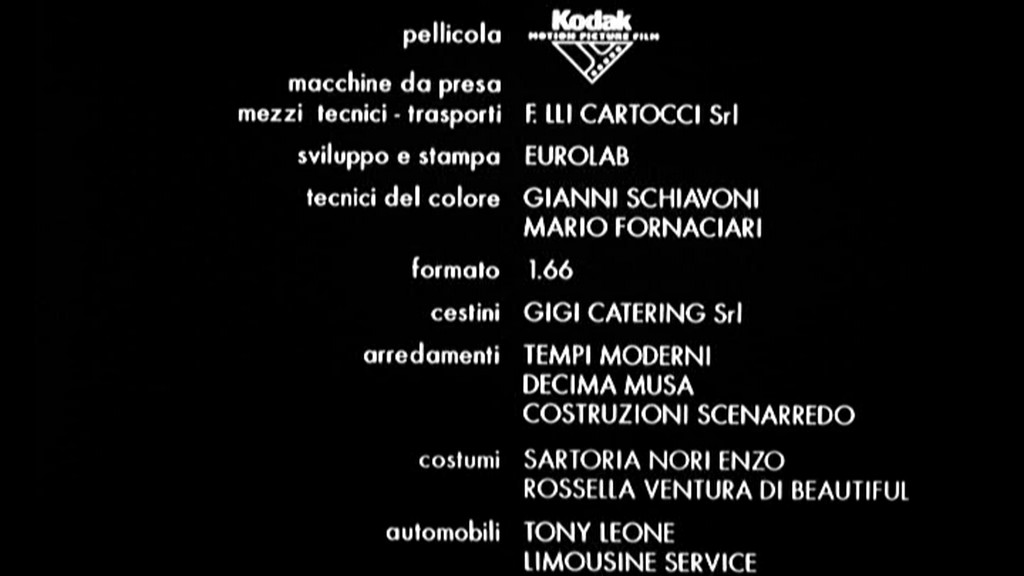
|
If it looks like this, leave the usher a tip
and make sure to send a letter to the cinema’s corporate office
commending the projectionist —
and in your letter of commendation, mention the show, the screen, the date, and the time.
If enough people do this, maybe things will improve.
Okay, back to the formats. Now, here are the picture formats that have been more commonly used through the years,
though some of them haven’t been used in quite some time.
Please please please please please please do not get hung up on the exact sizes or proportions.
There is slop factored in, always.
Take, for instance, the popular 1.85:1.
So long as the camera aperture is larger than the projector aperture, it’s safe.
So long as the projector aperture is no less than .441" tall and no more than about .460" tall,
and so long as it is no less than .800" wide and no more than .832" wide, it’s okay.
Therefore a projector aperture measuring .832"×.441" (technically 1.89:1)
and a projector aperture measuring .800"×.460" (technically 1.74:1)
are both still referred to as “1.85:1” — they both fall within the parameters,
and are close enough to .825"×.446".
That’s why video reviews drive me crazy.
I can’t even read them anymore.
They are overly obsessed with the exact proportion of width to height
and never check the results against the original film.
But checking the video against the original film is what they should be doing, because that’s what really matters,
and that’s what we’ll be doing on the next page.
|
| FORMAT | CAMERA APERTURE | PROJECTOR APERTURE |
| Full-Frame Silent 1.33:1 | .970" × .723" | .90625" × .6796" (prior to about 1910, the standard was about .940" × .705". Anyway, silent films have all shrunken so much that modern prints cannot withstand an aperture as wide as .90625"; better to file your own apertures at .90000". Also, standardization in the silent days was not too precise, and the framing and picture size from one camera to the next varied dramatically, so it’s really best not to get too eager about locking your presentations into one specific size; you need a little leeway in projector masking and screen masking.) |
| MovieTone / Photophone 1.18:1 | .868" × .723" | .800" × .6796" (.800" was overly cautious, I should say. Knowing what we now know, I would argue that we should file the apertures out to .825" or thereabouts, which would give us about a 1.21:1 ratio.) |
| Academy 1.375:1 | .868" × .630" | .825" × .600" (This is often called “1.33:1” or, more colloquially, “one-three-three,” and the reason for that is that this aperture was supposed to imitate, in miniature, the dimensions of the silent aperture. Indeed, many early sound projectors were equipped with Academy and proto-Academy apertures measuring .800" × .600", which would give 1.33:1 provided there were no keystoning. But, of course, nearly every cinema ever built has had keystoning, as the projector lenses are below or, far more often, above the center line of the screen. In older cinemas and theatres, the keystoning was so severe that it was decided to file out the apertures to about .825" wide, which gave the plates a 1.375:1 ratio, but on screen was not as wide because of the keystoning. Other proto-Academy attempts measured less than .800" wide and up to .610" tall and probably even a bit taller. As a matter of fact, Warner Bros. movies up to the end of the 1940’s, and maybe even beyond, need to be shown at .610" tall; if you run them with a .600" aperture you’ll crop the opening credits a bit. Believe it or not, to this day, when you order Academy apertures, there’s a fair chance that they actually are .800" × 600", or “one-three-three.” The projectionists are expected to file out the sides a bit more to compensate for the keystoning, but how many really do that? Now who else on this planet will ever tell you any of this?) |
| Widescreen 1.66:1 | .868" × .520" | .825" × .497" |
| Widescreen 1.75:1 | .868" × .496" | .825" × .471" |
| Widescreen 1.85:1 | .868" × .469" | .825" × .446" |
| Widescreen 2.00:1 | .868" × .430" | .825" × .412" |
| V V - SuperScope 2.00:1 (with a 1.5×1 anamorphic stretch — no longer used) | — NA — (shot in VistaVision and then reformatted in the printing — image on resulting film is approx .868" × .630") | .800" × .600 |
| SuperScope 2.00:1 (with a 2×1 anamorphic stretch — no longer used) | — NA — (shot with the full-frame silent aperture, but designed for a 2.00:1 crop and then reformatted — image on resulting film is approx .735" × .735") | .715" × .715 |
| 2.35:1 (with a 2×1 anamorphic stretch — this format was introduced as “Cinemascope” but numerous other companies have used it under many different names) | .868" × .735" | .839" × .715" |
| 2.39:1 (with a 2×1 anamorphic stretch) | .868" × .735" (yes, the same as 2.35:1, but without the same precision) | .825" × .690" |
| Cinemascope 2.55:1 (with a 2×1 anamorphic stretch and magnetic tracks rather than an optical track — the sprocket holes are undersized to make room for the mag tracks — no longer used) | .964" × .735" | .912" × .715" |
| Cinemascope 2.66:1 (with a 2×1 anamorphic stretch and magnetic tracks on a separate strip of film synchronized via Selsyn motors — I assume the sprocket holes would be normally sized) | .964" × .735" | I guess it would be .951" × .715" but I really don’t know.
I keep hearing that back in 1953 the Roxy Theatre in Manhattan NY premièred the very first Cinemascope movie,
The Robe, with picture reels synchronized with multi-channel mag sound held on separate reels,
and that the result on screen was about 2.66:1, with a little extra width than has ever been seen since.
But I’ve never seen any illustrations of the actual negative or of the very first original roadshow print,
and I’ve never seen the specs.
The odd thing, of course, is that if you wanted to file an aperture out to .951" wide,
you could probaby get 2.66:1 out of any |
| There are other bizarre formats, for instance “Super 35,”
which simply means shot with the full-frame silent aperture,
but framed so loosely that extreme amounts of height and/or width can be cropped off without ill effect.
These films can then be shown on television and retain (or not retain) all the image,
and they can be cropped in the lab or in the projector, and they can be reformatted to 2.39:1 anamorphic.
This is the format that’s recommended for inexperienced directors
who don’t know what they’re doing.
On the other hand, some of Terry Gilliam’s movies were shot this way,
but he and his crew know exactly what they’re doing, and frame for one particular crop.
I think Howard’s End was shot this way too,
which would explain why, if my memory isn’t acting up on me,
I saw one print hard-matted at 1.85:1 and another reformatted to 2.39:1 anamorphic.
More on this later, if I can work up the energy.
Also, in this HDTV age more and more 35mm film seems to be intended with a 1.78:1 result on screen.
The older version of the SMPTE alignment/crop/jitter/weave/ghosting/resolution chart had a setting for 1.75:1.
I can’t remember the title of the original version,
but the title of the reissue is
SMPTE 35PA | ||